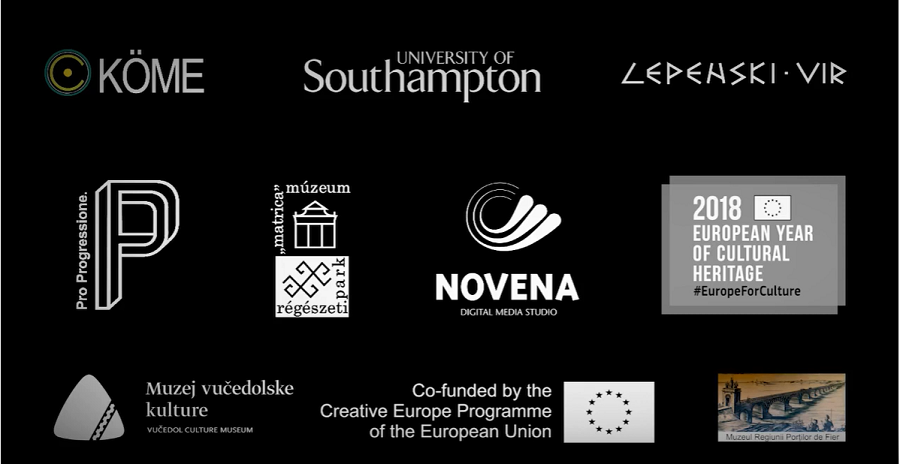Vucedol Culture Museum and the City: Free Entry for Vukovar Residents
December 32, 2022 - Though it has been visited by more than half a million visitors from Croatia and abroad since its opening in 2015, the Vucedol Culture Museum remains one of Europe's most underrated museums. The stunning architecture, unique location, the modern exhibition and exciting events deserve all the attention. A place with a soul like that, though, will no doubt go a long way.
As Glas Slavonije writes, the archaeological site of Vučedol is one of the most significant archaeological sites in Europe. For visitors of all generations who want to experience something new, beautiful, and interesting, the Vucedol Culture Museum offers a new universe of discovery and inspiration, with an incomparable and unrepeatable combination of location, architecture, pleasant atmosphere, and, above all, archaeological and historical values presented in a contemporary way.
It is not surprising that from the day it opened, the museum became an important place in the tourist offer of Vukovar, so many domestic and foreign tourists who visit the city on the Danube do not miss the opportunity to learn something about the locality itself and the history of the area. The museum employees help with their knowledge and presentation of the exhibition. Furthermore, they pointed out that a few changes await the citizens in the first days of 2023 and shared some good news for the residents of Vukovar.
"From 1st January, entry to the museum will be free for all Vukovar residents. It is enough to present an identity card as proof of residence. During the seven years since the museum's foundation, many fellow citizens have visited us, so we would like to thank them for supporting us. Also, the people of Vukovar visit the museum together with their guests and remain the best promoters of their city", pointed out the head of marketing Darko Bilandžić.
Since its opening on June 30, 2015, the museum has been visited by more than half a million visitors, making Vucedol one of the most visited museum institutions in Croatia.
During that period, it received several awards for its work and many activities in Croatia and abroad. Not so long ago, the first international scientific and professional conference on the meaning of Vučedol culture was also held in Vukovar.
For more, make sure to check out our dedicated Lifestyle section.
Vučedol Culture Museum Invites You to Out of the Box Virtual Exhibition
August 5, 2022 – The Vučedol Culture Museum in Vukovar remains a truly special place. Its unique location, architecture, and the dedication of those who make things happen there day after day, all keep drawing you back and leave you longing for more. This time, the invitation is out for all who like anything digital, 3D, and in general thinking out of the box. A new interactive exhibition nicknamed Vučedolac izvan okvira (The Vučedol Man Outside His Box) is open until the end of August.
Tportal followed up with the author of the exhibition, Darko Bilandžić, who is also the head of marketing at the Vučedol Culture Museum. He points out that, thanks to their approach to marketing and the possibilities of the digital world, he decided to offer the museum’s visitors a digital insight into the life of the prehistoric people of Vučedol.

Photo: Vučedol Culture Museum
“The people of Vučedol were advanced as a culture and in many ways ahead of many at that time. We could say that they thought outside the box. I believe that we have passed the time of static museums, which require visitors to walk through them and read the materials next to the exhibits. In addition to improving our website, we decided to go a step further and create an interactive exhibition using augmented reality technology”, says Bilandžić.
He explains that ten tablets are available to visitors, which they can use to scan ten posters to find the corresponding 3D, audio, text, or video content.
“With this type of presentation, we want to get even closer to the younger generation and keep up with the modern ways of presenting museum material, and thus further build our digital archive. I must admit that the feedback of our visitors pleasantly surprised me, as it clearly shows how important it is to continue working in the direction of new technologies”, says Darko Bilandžić.
He adds that even as a child he was interested in advanced technologies and that robots were his favourite toys.
“That passion for new and advanced technologies always stayed with me. Back in 2016, at the Vučedol Culture Museum, we had visitors take a virtual walk through the museum with the help of VR glasses”, he recalls.
He added that the “trigger” for greater involvement in the digital presentation of cultural material was the coronavirus pandemic when many museums were closed.
“It made apparent that a lot of museums were not ready for online work. We saw our chance there and I dove into learning and education, and this exhibition is the first result of that”, he says proudly, adding that without digital technologies in the future it will be difficult to imagine the operation of any museum.
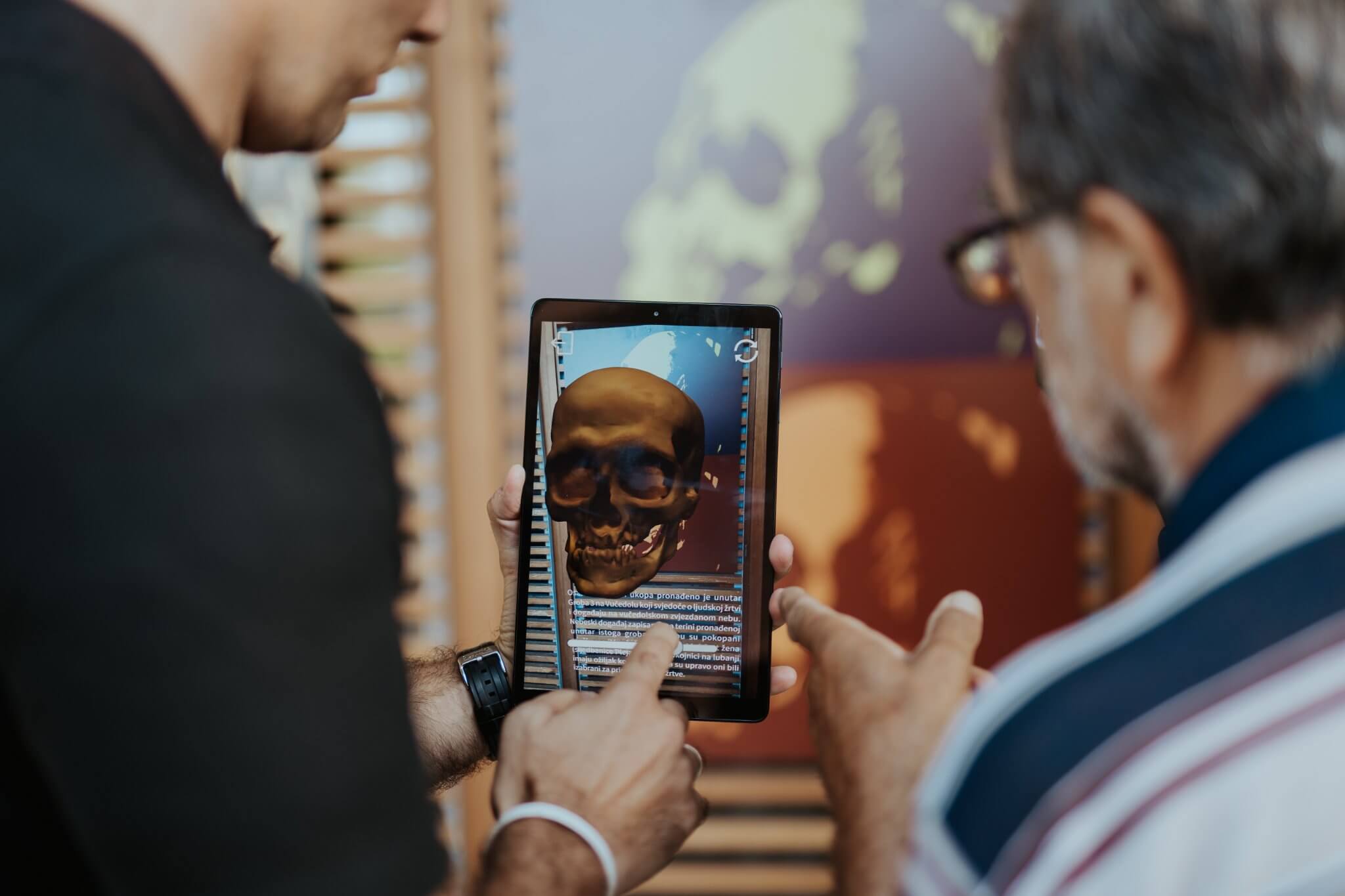
Photo: Vučedol Culture Museum
This marketing expert believes that augmented reality offers museums unimagined opportunities for development and getting closer to citizens of all ages.
“We especially want to get closer to young people and get them interested in everything that the Vučedol Culture Museum offers, and it offers many things that define today's life and reality”, concludes Darko Bilandžić.
Darko is a marketing expert who has a passion for a reality that is virtual, augmented, or extended. If you would like to know more about that, make sure to check out TCN’s interview with Darko on Culex, a successful VR company that he co-owns.
For more on lifestyle in Croatia, check out our dedicated lifestyle section.
Ever Heard of the Bronze Age Diet? Vučedol Archeological Remains Revisited
January 29, 2022 - The Paleo or Stone Age diet is amongst the most popular lifestyle trends in the 21st century, claiming a variety of health benefits including weight loss and improved mental health.
But what about our ancestors after the stone age? What were their lifestyles like over the next 3,000 years?
A Croatian ancestral burial site may hold some answers.
A recent study on remains excavated from the Vučedol archeological site located in eastern Croatia was able to determine the long-term dietary choices, and the type of food that inhabitants consumed during the Bronze Ages.
Results point to the possibility that they consumed more animal proteins and fewer greens than our Paleolithic ancestors.
Where is Vučedol and what is the significance of this site?
Vučedol is an important archeological site located in the southwestern Carpathian Basin.
In terms of modern boundaries, the vast Basin spans across the territories of Hungary, Slovakia, Poland, Ukraine, Serbia, Croatia, Slovenia, and Austria.

Outline of the Carpathian Basin with Modern Boundaries. Image: Google Earth
The Vučedol archeological site is located in the eastern region of Slavonia, along the Danube River, and is approximately 5 kilometers downstream from Vukovar.
While only 10% of the Vučedol site has been excavated today, rich findings from the area have improved our understanding of the late Stone, Copper, and Bronze Ages within the Carpathian Basin.

Location of Vukovar, Croatia. Image: Google Maps
For more in-depth reports of Vučedol heritage and archeological findings, take a look at TCN’s coverage here and here.
New insights
The remains at Vučedol were originally unearthed in 1897, where a total of 15 skeletons were found. However, due to technological and financial constraints, bioarchaeological data on these remains have been relatively scarce.
Fortunately, with access to modern scientific methods (i.e. stable isotope analysis) researchers have been able to revisit and conduct a series of tests on human remains excavated at Vučedol in the late 19th century.
Researchers suggest the graves dated back to the Early Bronze Age (3300-1200 BCE), but individuals were buried over a time period spanning several decades.
By examining the dental and skulls of the remains, the sex and age distributions of these remains stood out. The group was evenly represented by four male and four female skeletons. All individuals were able to reach adulthood.
Of these, 6 were considered ‘middle/older’ aged 35 years and older, while the other two were categorized as ‘young/sub adults’ (18-35 years).
Other archeological digs have unearthed remains from the same time period, but usually consisted of children or young/sub-adults. Although 5 of these individuals suffered from poor health during childhood, they were well enough to reach adulthood.
Some of the ailments they suffered were attributed to the lack of vitamins B12, and anemia brought on by iron deficiency and harsh living conditions.
During the Early Bronze Age, inhabitants experienced extensive socio-economic change. They lived through a period of great prosperity around 2500 BCE, lasting almost 150 years. Unfortunately, their fortunes reversed quite rapidly with a decline that lasted another 100 years.
Stone age vs. Bronze age diets
Researchers were also able to outline clear differences in diets between the Late Stone Age and the Early Bronze Age based on comparisons of stable isotope values from the remains.
It showed the reliance of inhabitants on different ratios of crops and animal proteins which evolved depending on the climate and social-economic conditions.
Generally, inhabitants of the Late Stone Age adopted similar agricultural practices. In line with the growing conditions of the area at the time, their diets were mostly made up of fibrous crops such as rice, wheat, barley, oats, beets, and potatoes as opposed to corn, sugarcane, or millet.
At the turn of the Early Bronze Age, it appears the region’s inhabitants began to incorporate more meat in their diet with a decrease in plant carbons in their remains compared to their Stone Age counterparts.
Researchers theorized inhabitants of the Early Bronze Age were able to regulate the farming of livestock, which provided them with a dependable source of protein.
Alternatively, the increase in protein consumption could also be due to the lack of abundant plant vegetation. Climate conditions during the time were seemingly not as hospitable to agricultural farming as those living during the Stone Age
They also supplemented their diet by hunting wild game such as deer and boar from the nearby forests. Occasionally, they caught fish from the Danube River, albeit to a much lesser extent than the consumption of animal proteins.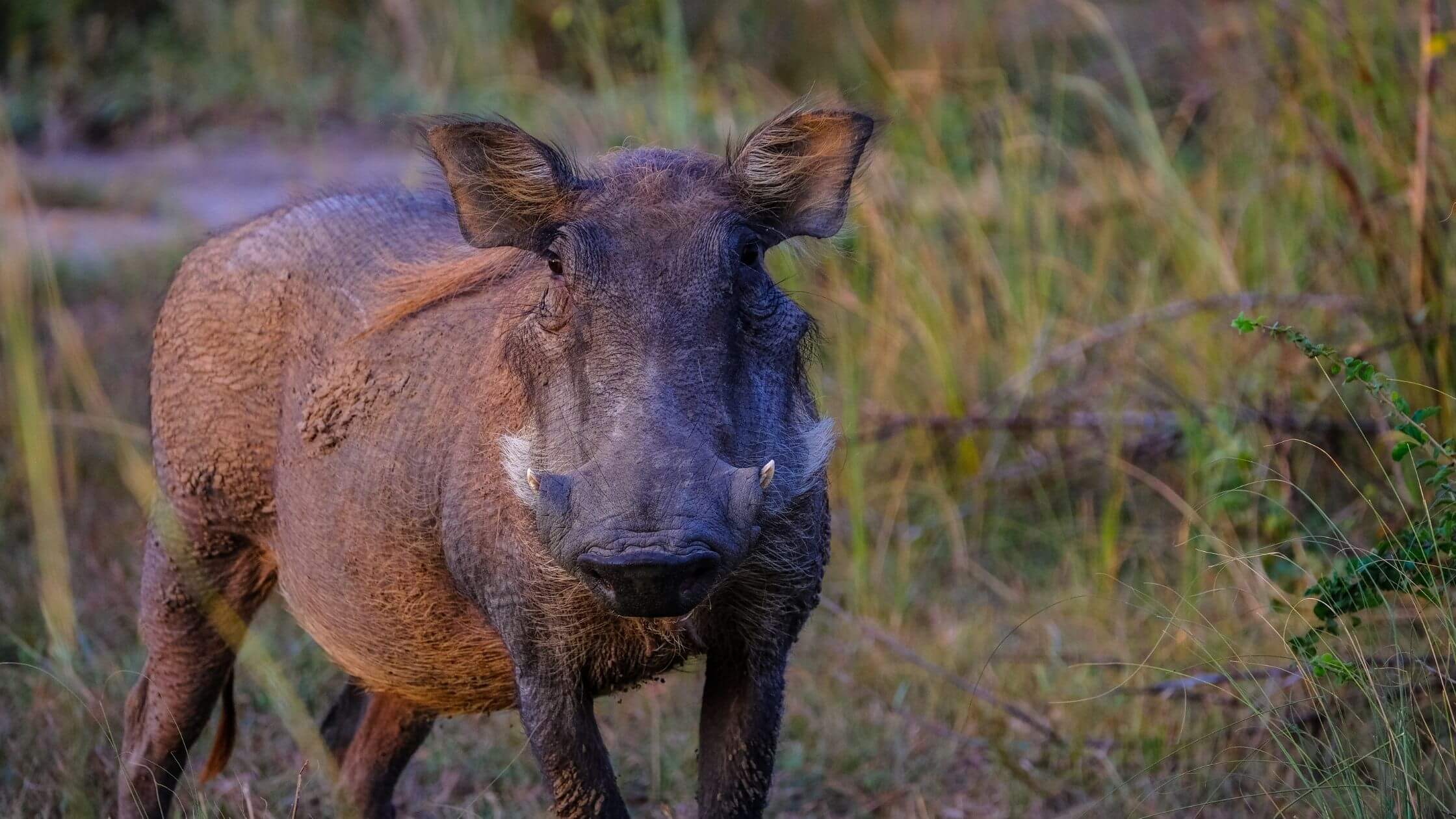
Wild Boar. Image: Francesco Ungaro/Pexels
While stable isotope analysis provides powerful insights into the types of food our ancestors consumed, for example, that they were likely eating more rice and potatoes than corn, it has limited application in identifying exact types of produce as well as serving sizes.
History of the Vučedol site
This site was inhabited for three millennia, from the Neolithic to the Bronze Ages (4000-1500 BCE), providing invaluable insights into the lives of people and the social and economic changes during this period.
Towards the end of the Copper Age, lived the Vučedol culture (3080-2340 BCE). The first recorded finds arrived at the Archeological Museum of Zagreb as early as 1894 through Josip Brunšmid, museum director.
This collection continued to grow due to the support of the Streim family who owned the land.

Vučedol, along the Danube River. Image: Google Earth
In one of the most famous finds surrounding the Vučedol site, ceramics were unearthed in 1938 by German archeologist RR Schmidt. The Vučedol culture was well known for the production of ceramics that required highly refined pottery skills.
These vessels are currently on display at the archeological museum in Zagreb.
For more, check out our dedicated lifestyle section.
Vučedol Archaeological Park to be Backbone of Slavonia and Baranja Tourism
September 19, 2021 - The Vučedol Archaeological Park project was presented at the Museum of Vučedol Culture to introduce the events that will follow in the next two years.
Namely, this extensive project includes the construction, reconstruction, and revitalization of the archeological site, communal and catering infrastructure, and the tourist promotion of the entire project on an area of slightly more than 28 hectares, reports HRTurizam.
“The Vučedol Archaeological Park project is conceived as a platform, backbone, and initiator of a complex program of systematic interdisciplinary research of the Vučedol archaeological site, which expands the area of Vučedol. It presents as an archeological-historical, but also a tourist-catering and sports-recreational center," said the director of the Museum of Vučedol Culture, Mirela Hutinec.
At the future site, there will be a planetarium, info point and scientific research center, restaurant, area for the presentation of Vučedol livestock, a museum square, Vučedol labyrinth and children's playground, reconstruction of the Megaron and Vučedol settlement, a stilt house on Orlov otok, and passenger and communal port for boats. These are big plans that, once realized, will be the backbone of tourism in Slavonia and Baranja and an important place for scientists and researchers.
The project's specific objectives are preserving the Vučedol archaeological site and enriching the cultural (archaeological) and tourist offer by using creative, innovative, and technologically advanced solutions in education, presentation, and promotion of the Vučedol Archaeological Park.
The partners of this vital project are the Croatian Ministry of Culture and Media, the City of Vukovar, the Public Institution Port Authority of Vukovar, and the Vukovar Tourist Board. The project value is 117,299,998.51 kuna, of which 85%, or 99,704,998.72 kuna, are grants from the European Regional Development Fund.
In the entire locality of Vučedol, after 40 years of systematic research, only 10 to 12% of the area has been explored. So, we can still expect new knowledge about the Vučedol culture.
"In Europe, the highest level of civilization was developed by the Vučedol culture, which began here on Vučedol around three thousand years ago. As far as we know, this is the oldest locality of the Vučedol culture, and everything started from this area. Here we have the oldest Indo-European calendar, excavated at the site in Vinkovci. If we can recognize and read it, then we have the oldest pictorial letter of Indo-Europe," said Professor Aleksandar Durman, who has been working on researching Vučedol culture for many years.
For more on travel in Croatia, follow TCN's dedicated page.
Vučedol Culture Museum Launches Virtual E-Learning Platform
December 9, 2020 - The Vučedol Culture Museum has adapted to the current COVID-19 situation and launched an e-learning platform so visitors can enjoy a virtual experience of the museum.
HRTurizam writes that although the museums are still open, of course with the observance of all epidemiological measures, due to the epidemiological situation they are poorly visited, especially since all tourist activity is currently on hold.
Faced with new challenges, and following the digital trends, the Vučedol Culture Museum has prepared two novelties in order to make it easier for all visitors to have a virtual experience of the museum. Thus, they made a 360-degree interactive tour of the Vučedol Culture Museum, and now they are among the first, if not the first museums in Croatia, to create a virtual e-learning platform, i.e., an interactive quiz.
"As COVID-19 significantly influenced visits to museums, we decided to adapt to the times and still follow modern trends in technology," says Darko Bilandžić, marketing manager of the Vučedol Culture Museum and creator of the virtual walks and quizzes, adding that the idea to take it a step further than a virtual tour and an educational quiz.
"This quiz falls under the new buzz word 'e-learning' in which visitors will see through 26 questions how much they know about Vučedol culture. Through interactive content, we are sure that we will provide the user with an educational and interesting experience and increase knowledge about Vučedol culture," adds Bilandžić.
The interactive quiz goes through 13 rooms and exhibits within the museum and contains a total of 26 questions in which everyone can test their knowledge of Vučedol and learn new knowledge about Vučedol culture. After the correct answer, a brief explanation of the correct answer is displayed.
"I am sure that others will soon recognize the importance of e-learning as a modern tool," concluded Bilandžić.
This is just one small example of the digitalization of tourism, and the whole platform is just opening the door for an upgrade that is virtually limitless. It is a digital platform or medium that can be expanded in various ways, and is just a matter of creativity and, of course, budget.
You can learn more about the interactive quiz of the Museum of Vučedol Culture HERE
To read more about lifestyle in Croatia, follow TCN's dedicated page.
Vucedol Era: When Eastern Croatian Settlements Most Important in All Europe
October 24, 2019 - One of the greatest archaeological treasures of South-East Europe lies on the banks of the Danube in eastern Croatia, as it has for more than 5,000 years. Meet Vucedol.
Have you heard of Vucedol?
And if you have, do you now what it is exaclty? A town, a village, a region, a culture, a people?
Perhaps you are like me and had heard of Vudecol, knew that it had something to do with an ancient civilisation close to the Danube, and that there was a museum somewhere out there in eastern Croatia.
It was time to fill in this embarrassing gap in my knowledge about eastern Croatia, and a visit to the Vucedol Culture Museum was put on the list of our recent HeadOnEast family visit to discover the wonders of Slavonia and surrounding areas last weekend.
I was stunned by what I found.
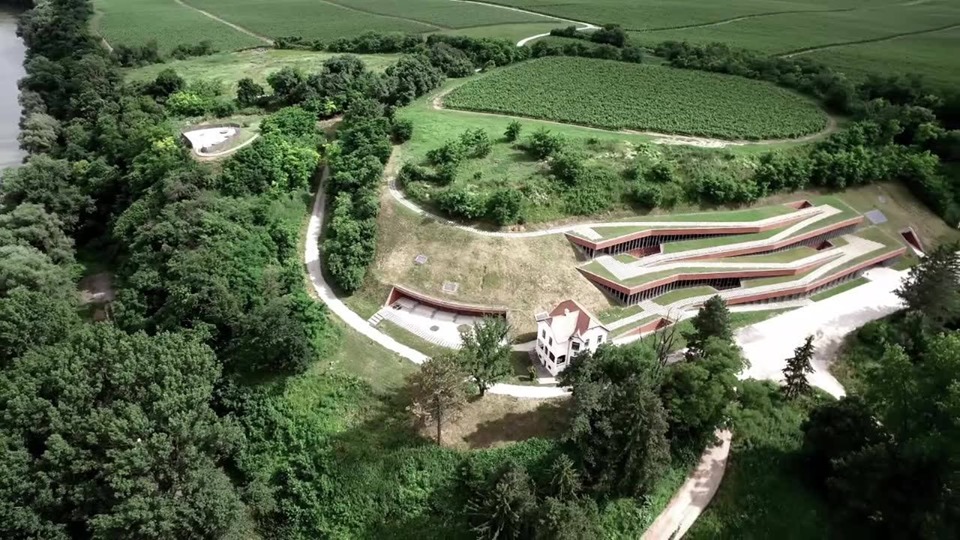
It turns out that Vucedol is a small settlement these days just south of Vukovar. Located on the Danube, it is a sleepy place, but one which once was among the most important settlements in all Europe with a civilisation s advanced as any in the world.
The right bank of the River Danube in eastern Croatia was settled by people of the Vučedol culture in the early third millennium B.C. This leading cultural formation between 3000 and 2500 B.C. strongly influenced the other cultures of the time and has left noticeable marks on the entire heritage of Europe. It coexisted with the Sumerian period in Mesopotamia, the building of pyramids in Egypt, and the early layers of Troy. The Vučedolians were the first people to have mastered time—the first culture that made a calendar! The first astronomers to read the secrets of the heavens. It is shameful how little we today know of the images above our heads… Pit 6, which was later re-numbered as Grave 3, was dug 4 meters away from the edge of the lowest floor of the Vučedol culture. In the grave, or rather, tomb, a total of eight bodies were found. Especially noteworthy among the large number of ceramic finds is the terrine, the most artistically decorated one of all those found so far in the Vučedol culture. On the night of 9 March 2889 B.C., having just passed through the Pleiades, the planets Venus and Mars found themselves in conjunction visible from Earth as a close approach or “posture of love”.
Introduction to the film about Vucedol - The Prehistoric Night of Venus and Mars.
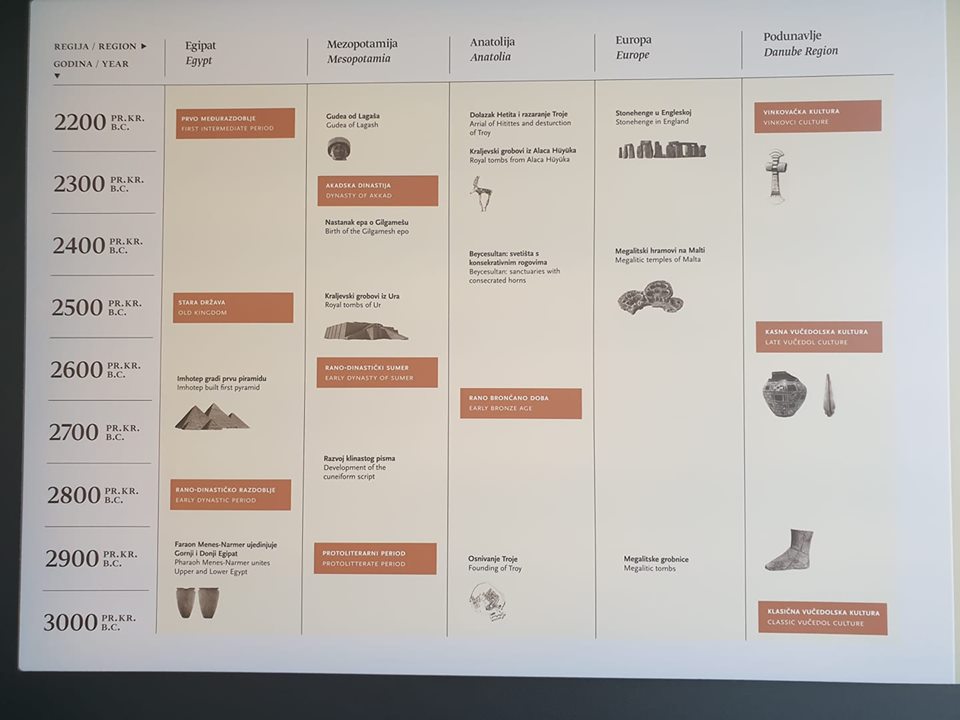
If you look at the timeframe of ancient sites, Vucedol does indeed appear to be very advanced.
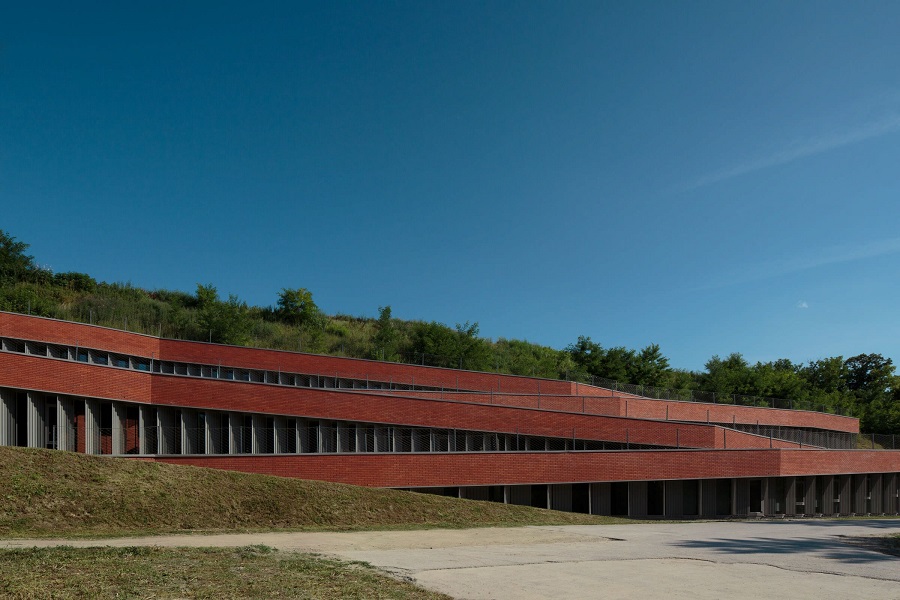
A rather excellent museum, the Vucedol Culture Museum opened in 2015 on the banks of the Danube next to some of the Vucedol excavation sites.
And rather a fascinating little place it is, which has so far been visited by more than 200,000 people, a number that should increase considerably as tourism in the east develops, and should better connections to existing tourism materialise. Vukovar is 6km away, for example, and received tens of thousands of river cruise tourists each year, but almost none make it to Vucedol.
And they are really missing out, for there are some really FASCINATING things inside, all of which make up part of the Vucedol culture, which I found incredible for its sophistication all those years ago.
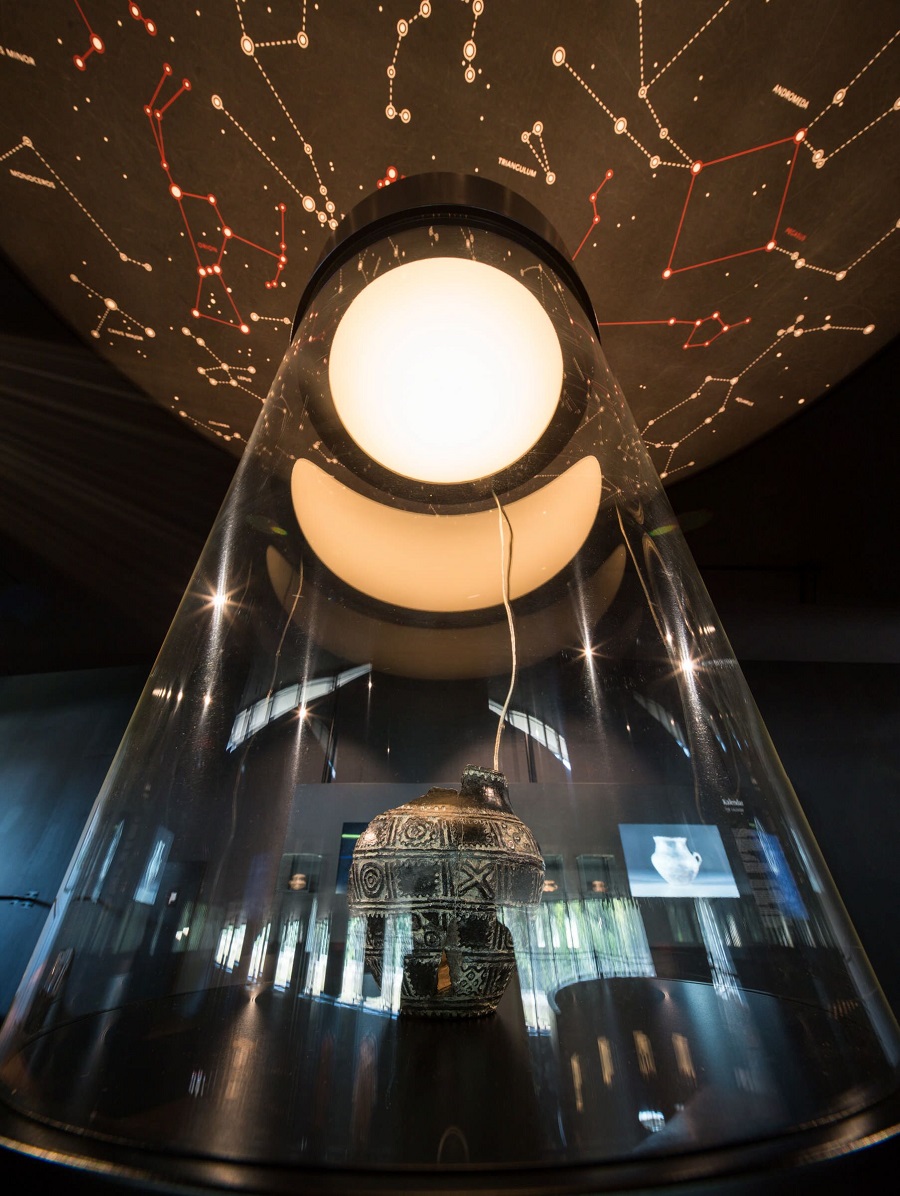
(All the good photos in this article, including this one, by Romulic & Stojcic)
For Vucedol culture is home to the oldest calendar in Europe, an example of which was found on a pot in nearby Vinkovci, itself the oldest continuously inhabited town in Europe, dating back 8,300 years. Here are 10 things to know about Vinkovci from a recent TCN visit.
The Orion calendar is based on the constellation of the stars, as you can see in this brief video above.

And there are theories that the stars played a role in the practice of human sacrifice after studying some of the skeletons recovered from the Vucedol site.

Given that the height of Vucedol culture was some 5,000 years ago, they seemed to be very advanced for that era looking at the exhibits of findings on display. And it is tantalising indeed to speculate what else is still to be found - only 10% has been excavated so far.
Among the exhibits is a life-size exhibit of a Vucedol cart, which was pulled by oxen, but much more interesting...
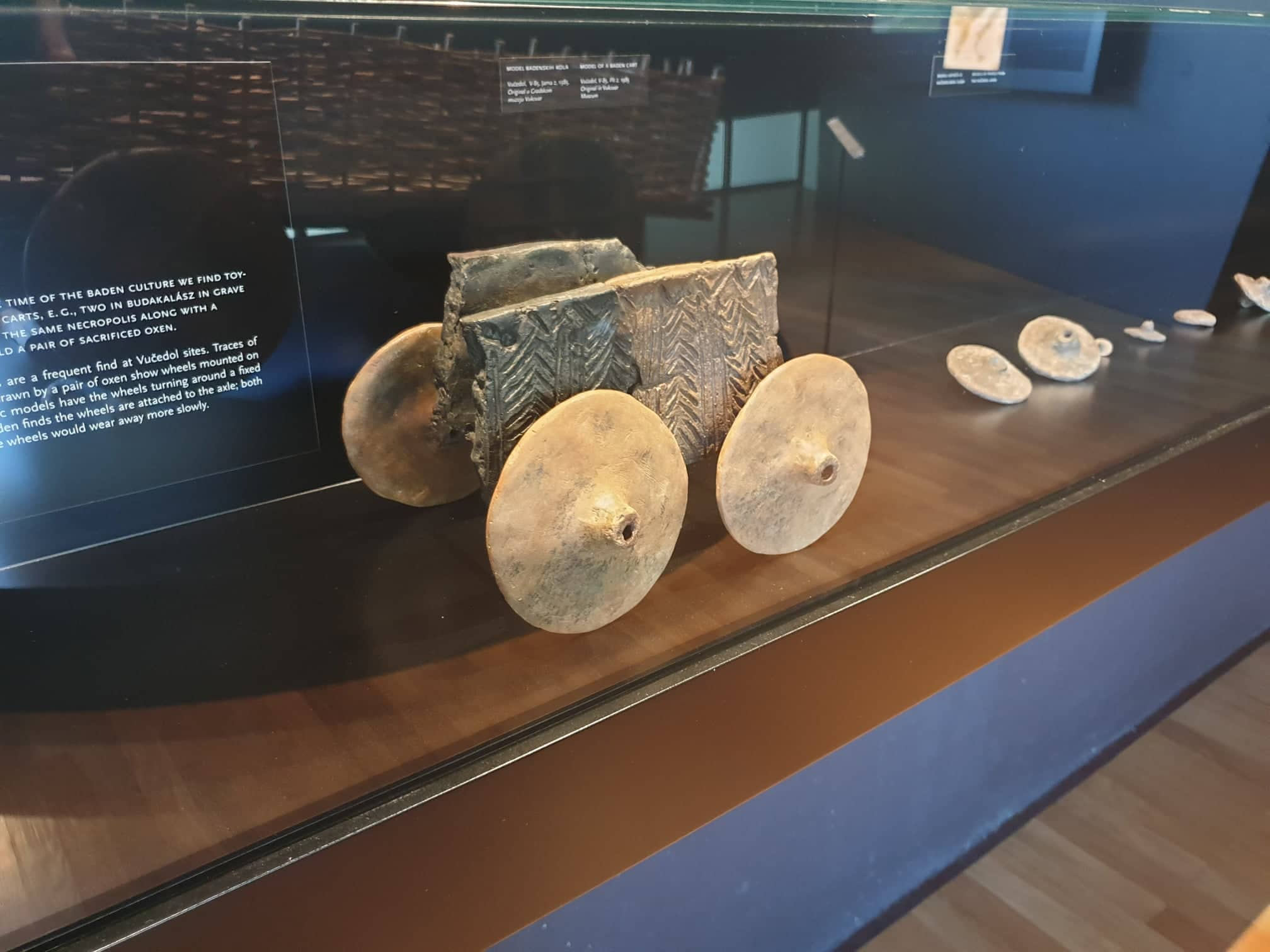
... was this tiny model, an original. A prototype or kids' toy?
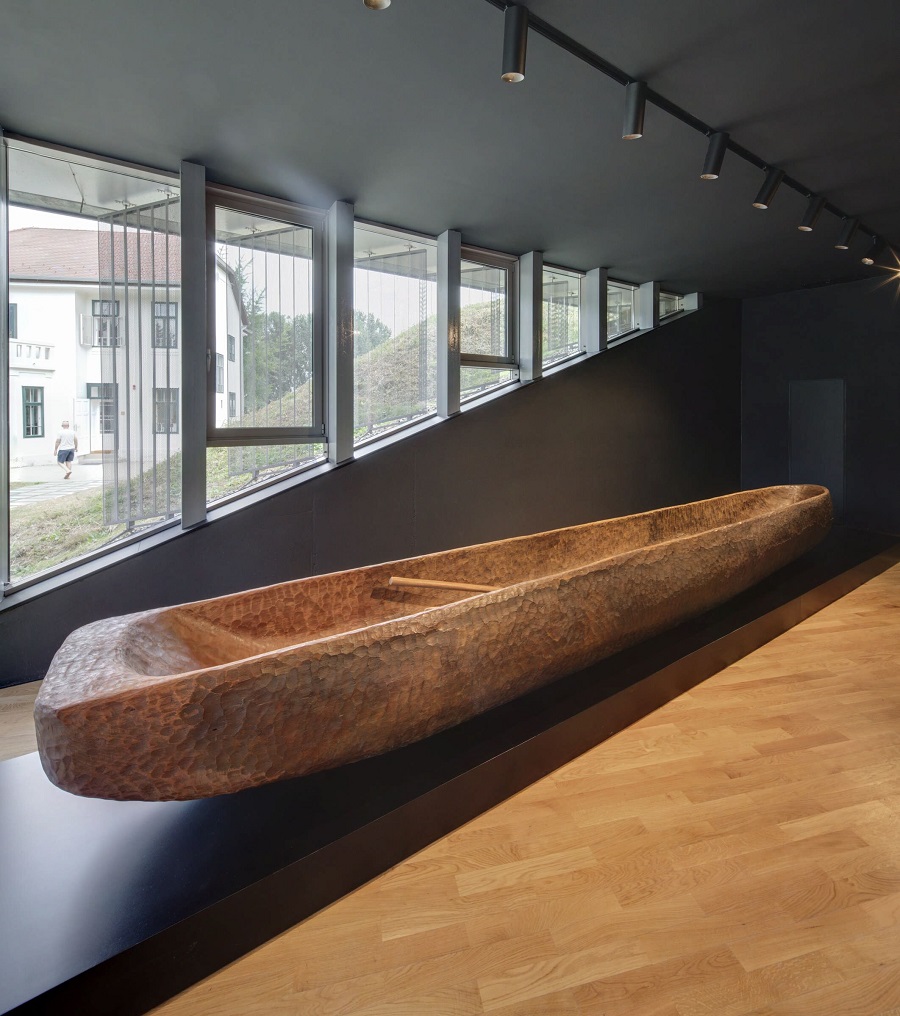
And there was river transport - these beautiful wooden boats cut from one tree, complete with oars.

A reconstruction of a Vucedol house.
Get more of a feeling from this reconstruction video of the original Vucedol settlements.
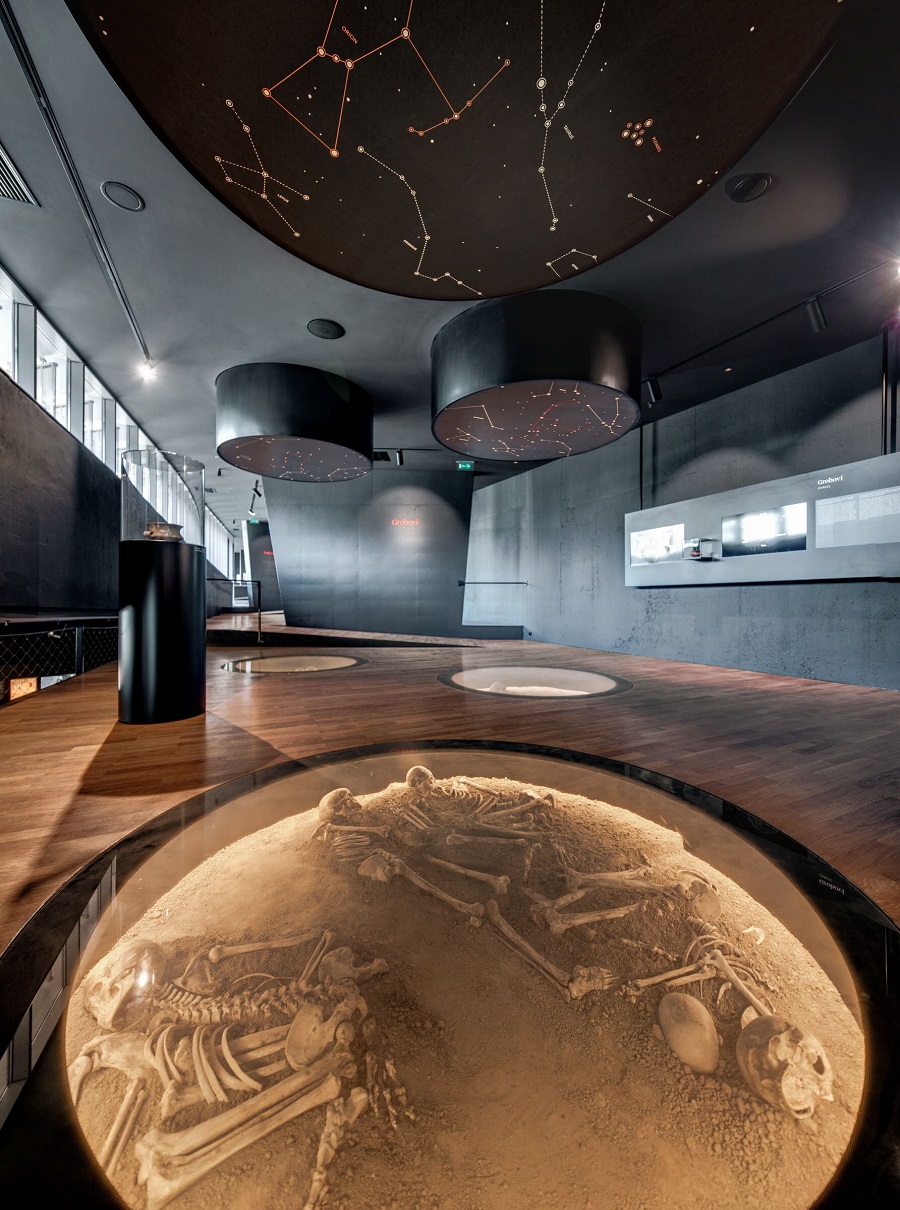
The museum itself has won awards for its design, and I really liked the layout as we moved between its 19 rooms.

And the content kept on coming...
Another find in Vinkovci, the oldest continuously inhabited town in Europe - the first example of metal casting.
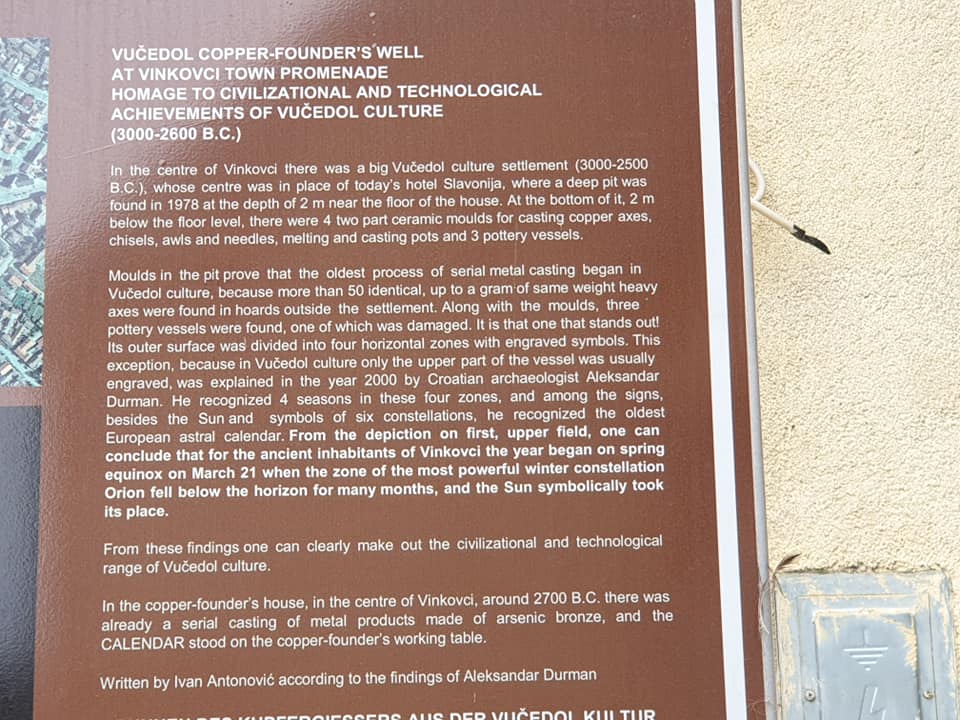
The copper-founders had a shaman-like status within the community, and they lived away from the main settlements.

A relatively recent discovery from last year - the first case of the infamous Croatian chequers, which adorn the national flag and which were seen by billions on the shirts of the heroic Croatian national team during the World Cup Final last summer.
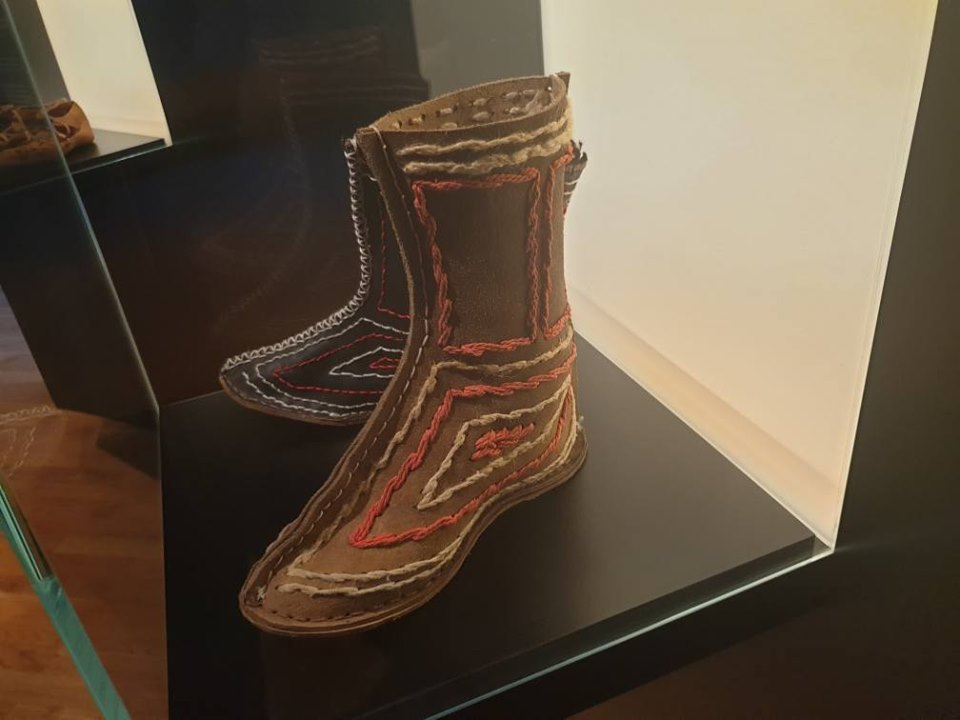
I was surprised by the sophistication and vibrancy of Vucedol fashion - remember we are going back 5,000 years. They were the first to have shoes designed for left and right, apparently.
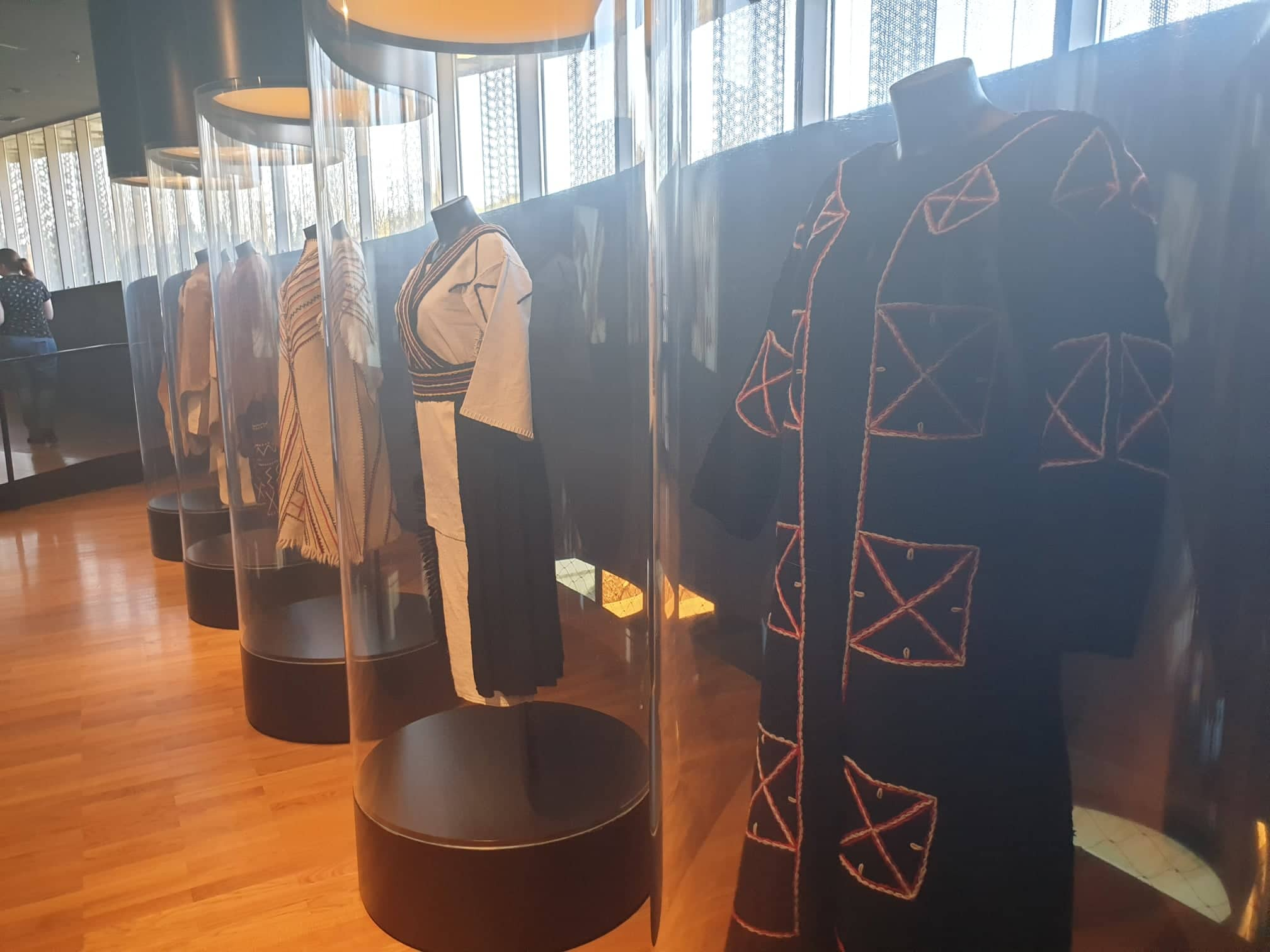
And the dresses of the women would not look out of place in traditional Croatian folklore dress today. How cool would it be for a big fashion house today to come up with a Vucedol range inspired by the designs of five millennia ago?
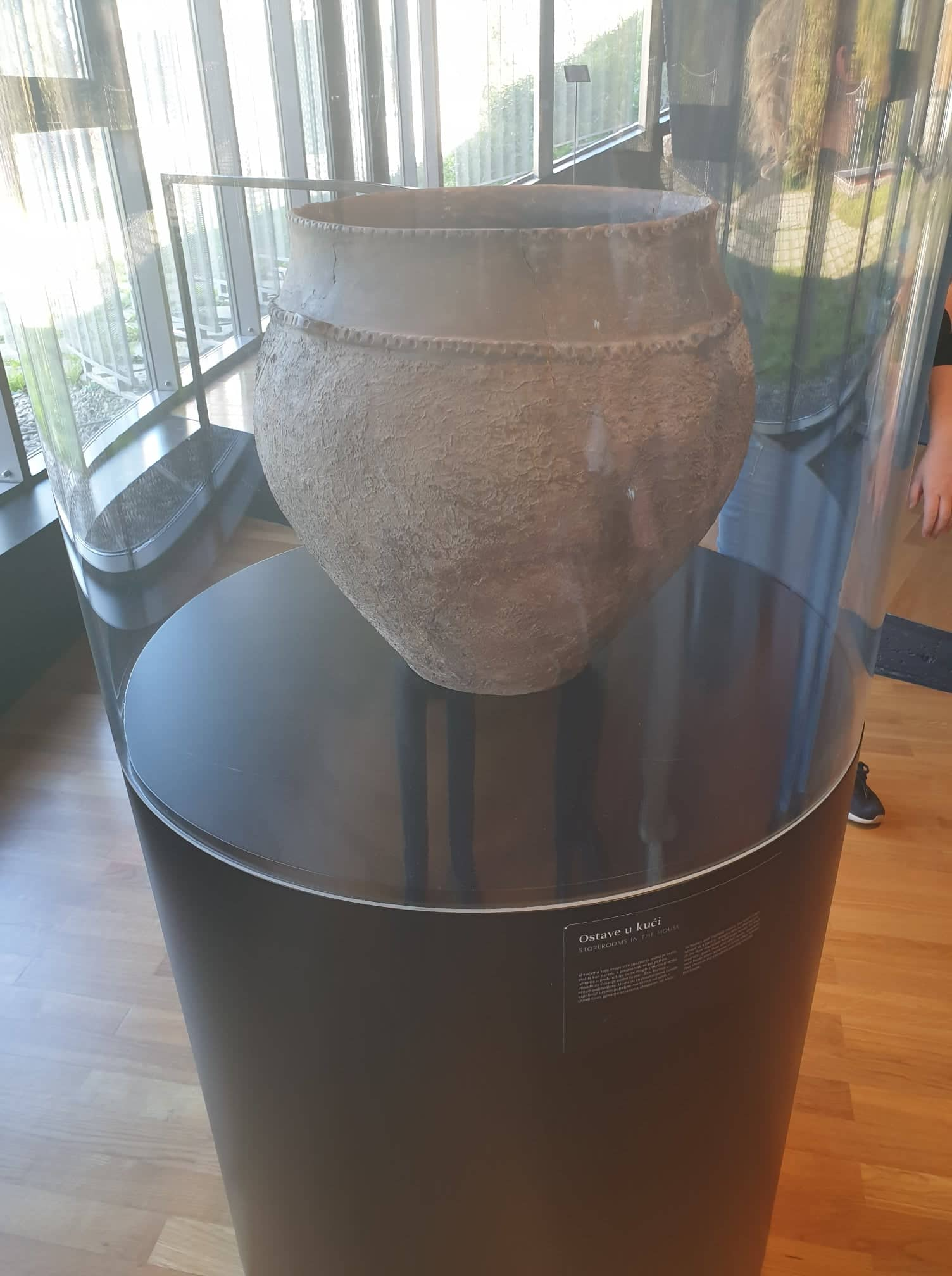
And a rather important pot for beer lovers - evidence of beer brewing dating back to 3,000 BC.
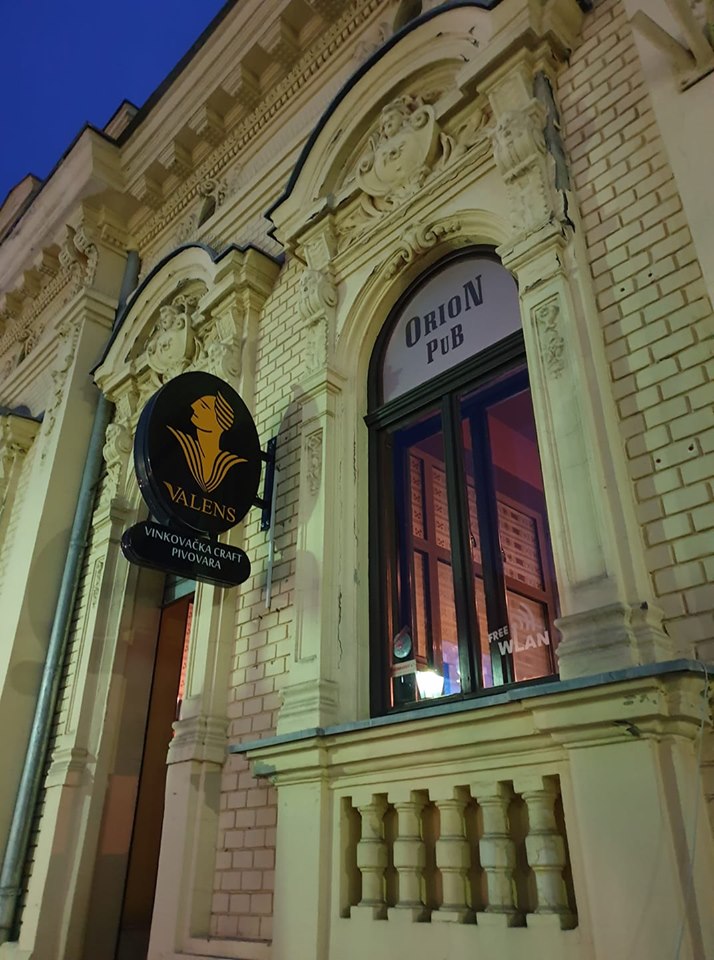
Beer was obviously popular in these parts throughout history. That oldest town Vinkovci was the birthplace of no less than two Roman Emperors, once of whom - Valens - was such a beer lover that he earned the nickname of Sabaiarius, or 'Beer Belly.' His legend lives on through the excellent Valens craft beer of Vinkovci, which you can find in the town's Orion bar (named after the oldest calendar in Europe).
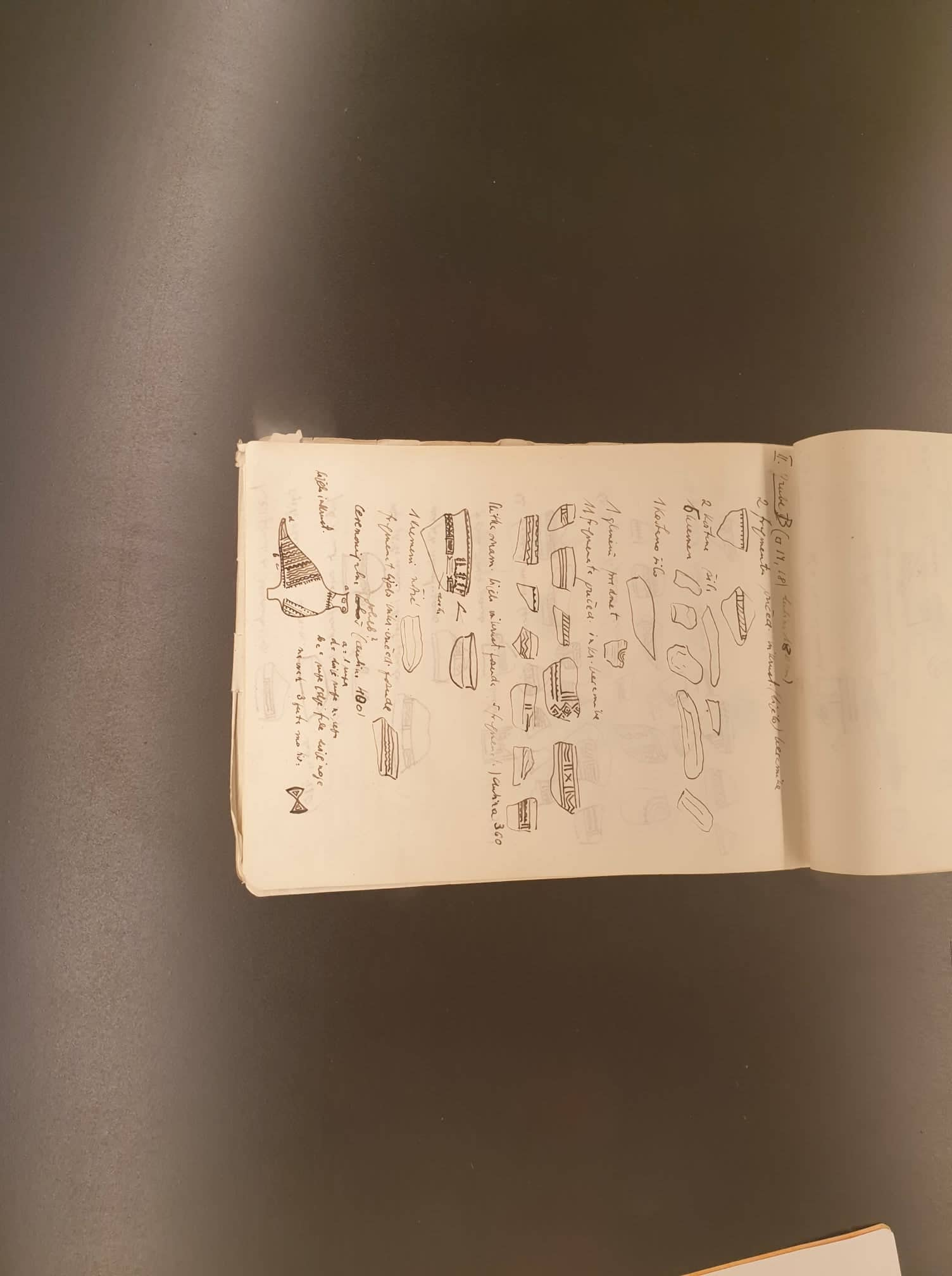
Included in the exhibits are some of the original scribblings of the early archaeologists, and you can see the famous Vucedol dove, which became a symbol of peace for Vukovar. In actual fact, the latest thinking is that was not a dove, but a partridge, due to the drawings, but also due to the partridge's tendency to limp when protecting its nest - similar to the limping copper-smelting shamans affected by arsenic from the metal.
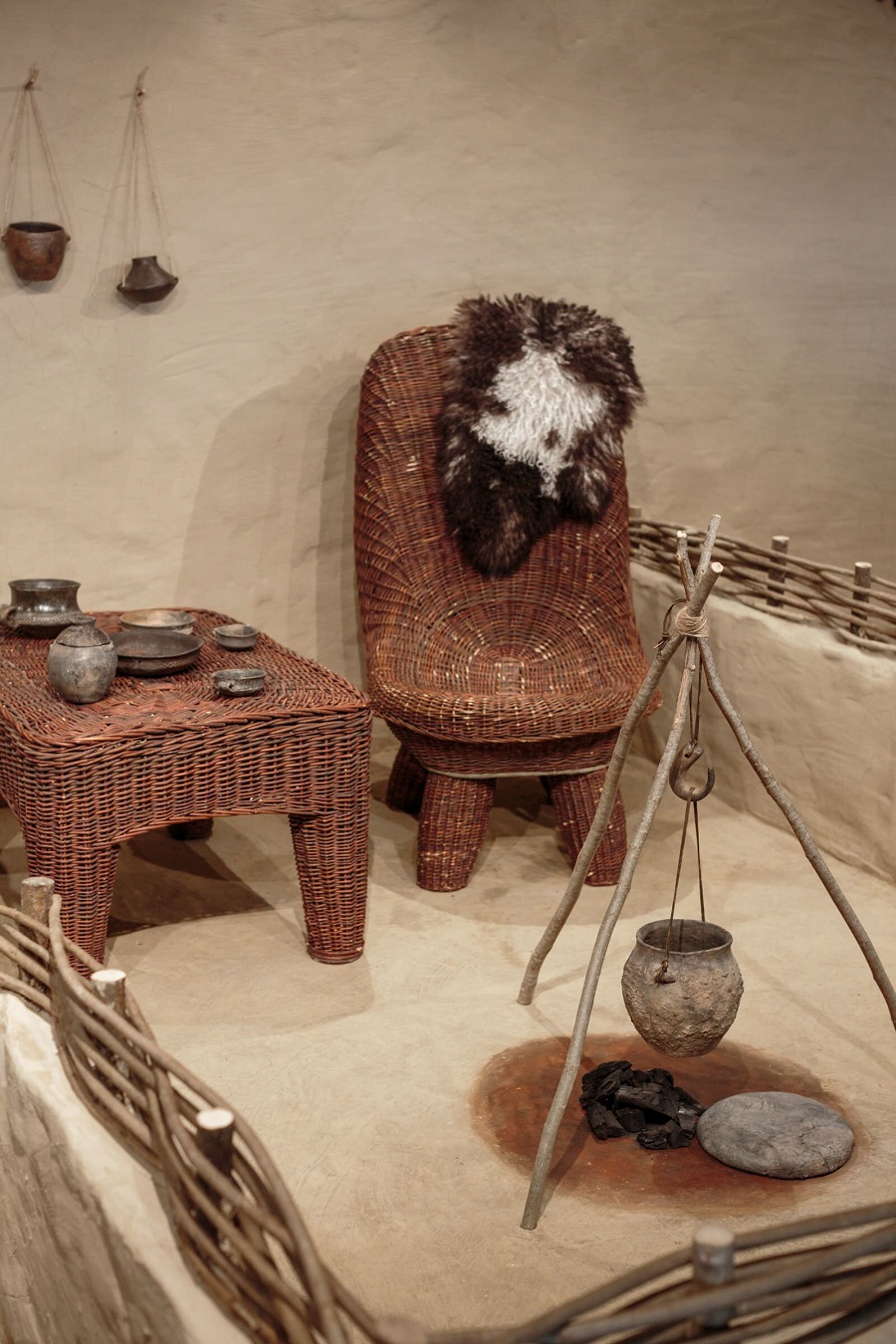
Domestic life in Vucedol.
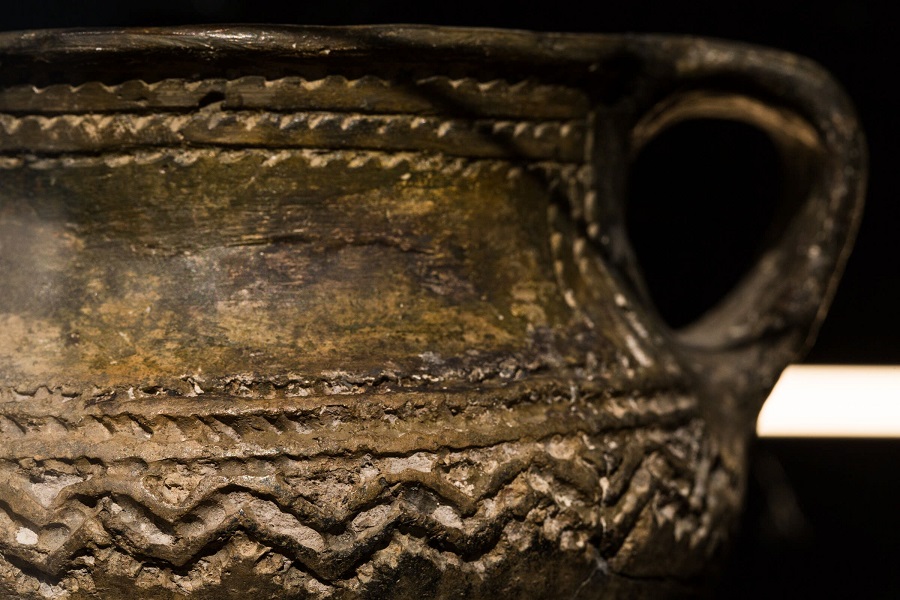
According to our guide, although Vucedol culture is centred in eastern Croatia, it was migratory and there is evidence of it elsewhere in 14 countries. Part of those regional differences is reflected in the pottery. Eastern Croatia is VERY flat and that was reflected in flatter lines in the designs, whereas more mountainous regions had their topography represented on the pottery accordingly.
And excavation is ongoing on a limited budget. Some of the supporters of a recent project, above.
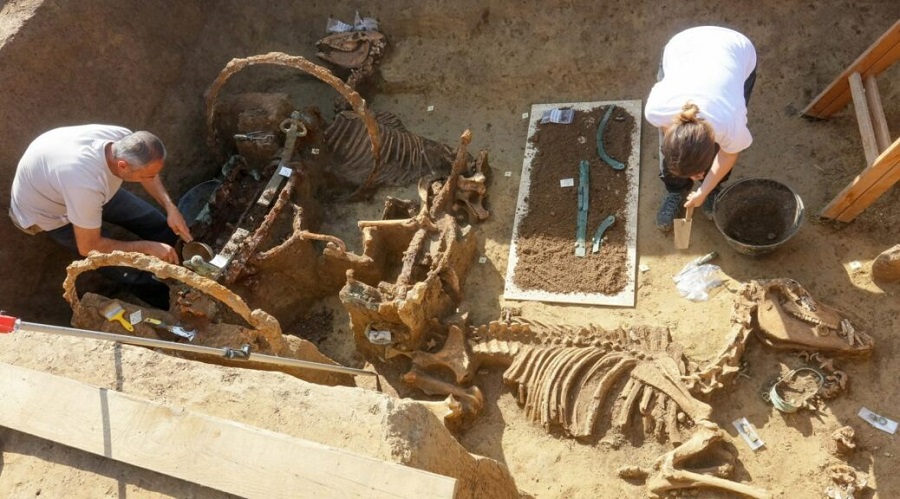
And while it is mouthwatering to contemplate what more remains to be found, when you combine the riches of the surrounding area, the potential for discovery of one of the most important sites in Europe is surely there. Here is one such post-Vucedol discovery earlier this month near Vinkovci, for example - an intact Roman chariot with horse.
As I am far from an authority on the subject, I leave you with some videos from Vucedol, including this one with some of the ongoing excavation.
A journey back in time with reenactments.
And Vucedol in 4k and from the air.
To follow the latest from Vucedol and any new discoveries, follow the dedicated TCN section.
HeadOnEast: How to Make the Most from a Weekend in Eastern Croatia
October 23, 2019 - Even for many Croatian residents, eastern Croatia is a relatively unknown destination, so what is there to explore in a weekend? TCN decided to HeadOnEast on a family road trip to find out.
We had been discussing a weekend in Budapest or Vienna. That is one of the great advantages of living in Varazdin - there is so much that is in driving distance. But in the end, we made a family decision to go in an entirely different direction for a weekend of family discovery - Slavonia.
The initial publicity from the HeadOnEast - Hedonist@Slavonija has died down now that Days of Croatian Tourism is behind us and the tourism chiefs are safely back in Zagreb, but those few days reignited my enthusiasm for eastern Croatia, and the family seemed to like the photos I was sending back. Could we have a more fun weekend in Slavonia rather than Budapest or Vienna? We decided to find out.

School finished at 13:15 in Varazdin, and we were on the road by 15:00, destination Bilje just outside Osijek, where we would stay with friends. The journey time was much shorter than I had imagined, just over three hours via Zagreb. Slavonia was actually closer than most of the coast.
The roads were clear and we made good progress and as we turned off the main Belgrade motorway closing in on Osijek, a huge church appeared on the horizon. But really massive.
Djakovo Cathedral. It was only just off the road, so we decided to stop for a quick wander around.
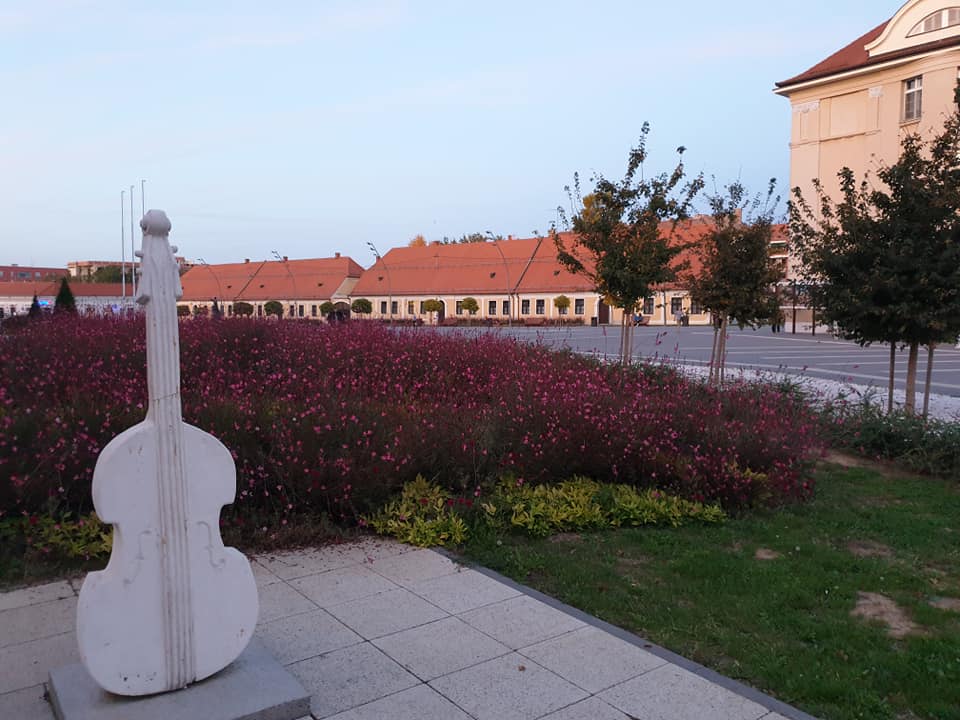
And what a pretty little place Djakovo is, with one of the nicest main squares in Croatia.
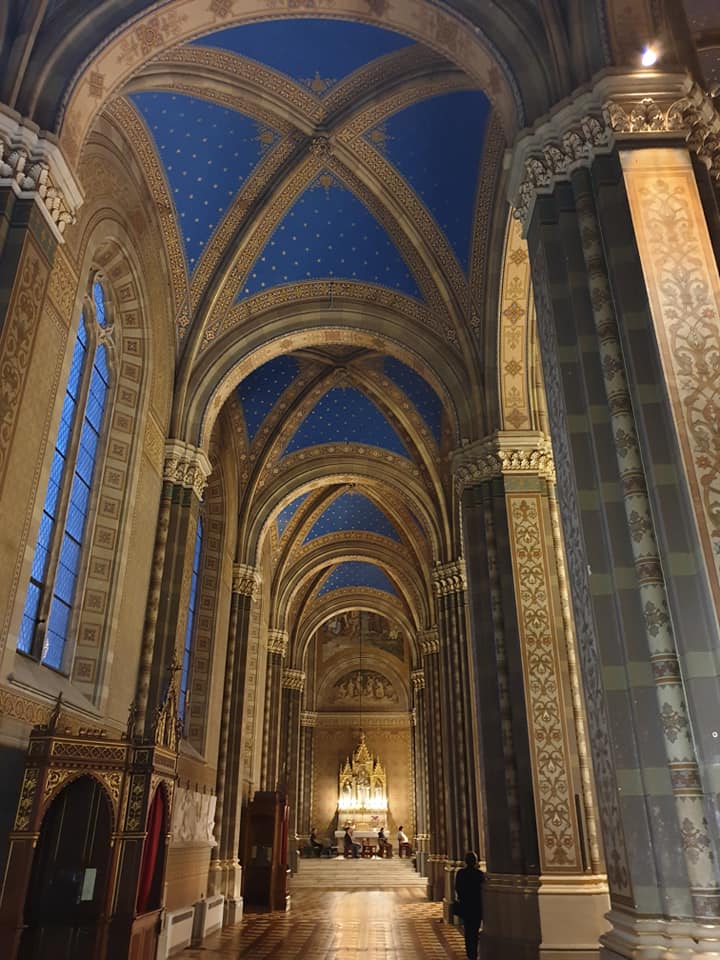
And the cathedral is outstanding, both inside and out. Mass was underway and so we snuck in - this photo above is just from one of the sides, not the main altar.
We debated on whether or not to visit the famous Djakovo Lipizzaner horses, but decided that we would save that for next time as we wanted to press on.
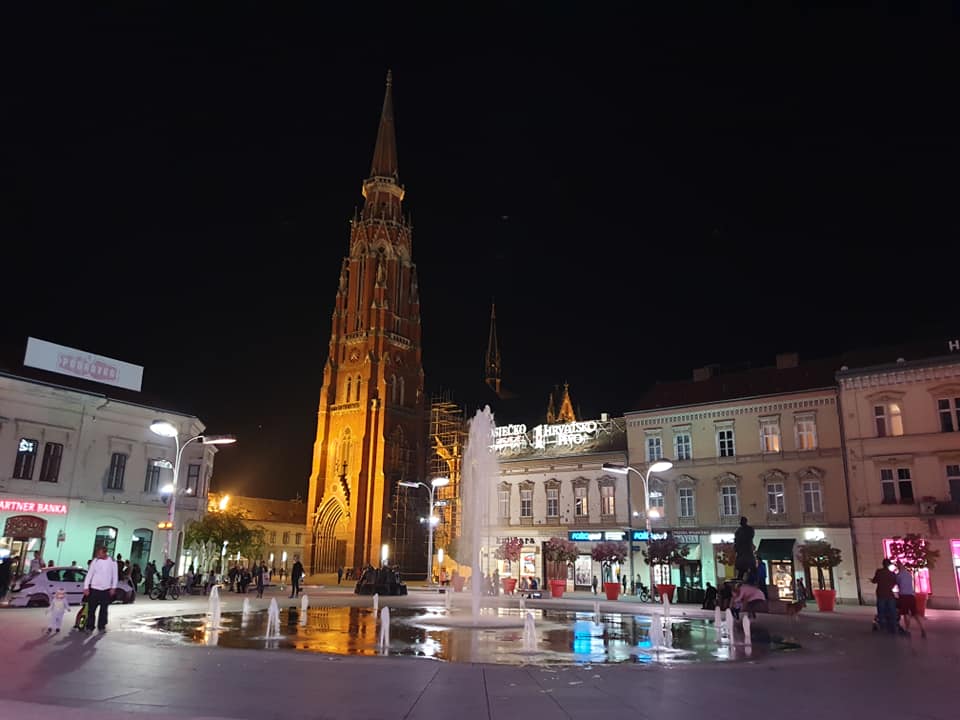
Downtown Osijek of course his its own mightily impressive cathedral from the same era and architect, some 3.5 million bricks in all towering over the city skyline.
There was a really nice vibe around town early on the Friday night, a wonderful place to walk around and explore the historic streets and buildings.

Being on the Drava, Osijek has its own 'riva' just as in Dalmatia, a place of space, nature and people watching. A nice little spot for a coffee on arrival.
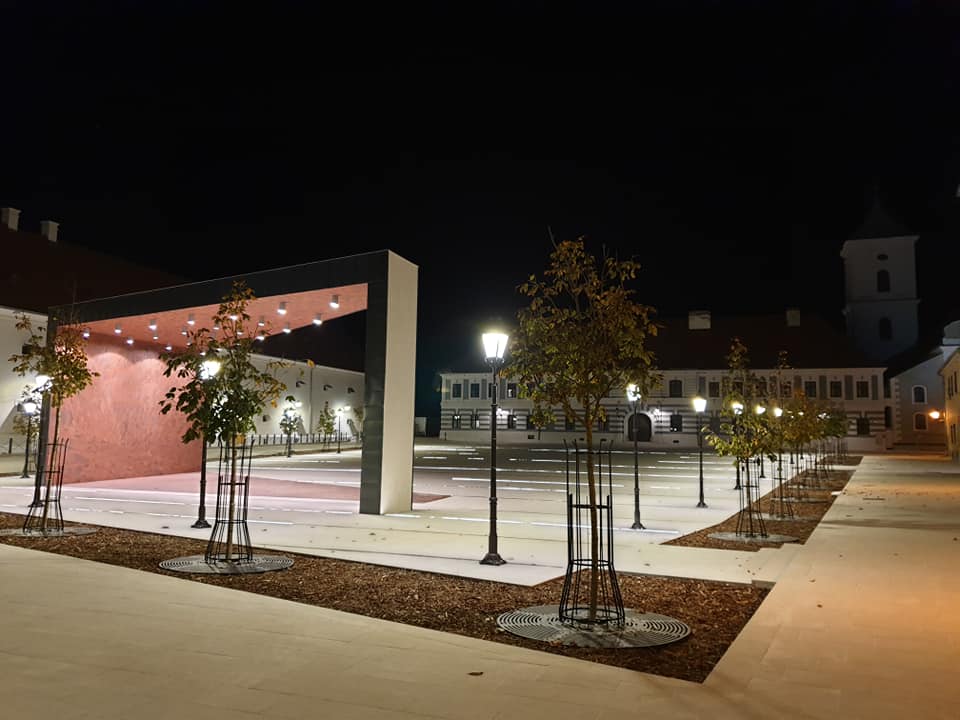
it was my family's first visit to Slavonia and I wanted them to see as much as possible, and the walk along the river to Tvrda, or Fortress, was magical. And although the fortress and old town date back centuries, some rather impressive changes and upgrades are in process, such as this spectacular new square, which was until recently mostly a muddy parking lot.
And when the old town comes alive, it really comes alive. Things were a lot quieter during our visit, but take a tour of the HeadOnEast gourmet festival earlier this month in the video above.
Osijek surprised us all with its beauty and the sheer number of historic buildings and wide tree-lined avenues - gllimpses of its past glories. Get more of a feel in this walking tour above, organised by locals with a lot more knowledge than this fat British blogger.

And so to our accommodation, and one which we were all looking forward to. A weekend without gadgets in the natural beauty of OPG Mario Romulic just outside Bilje.
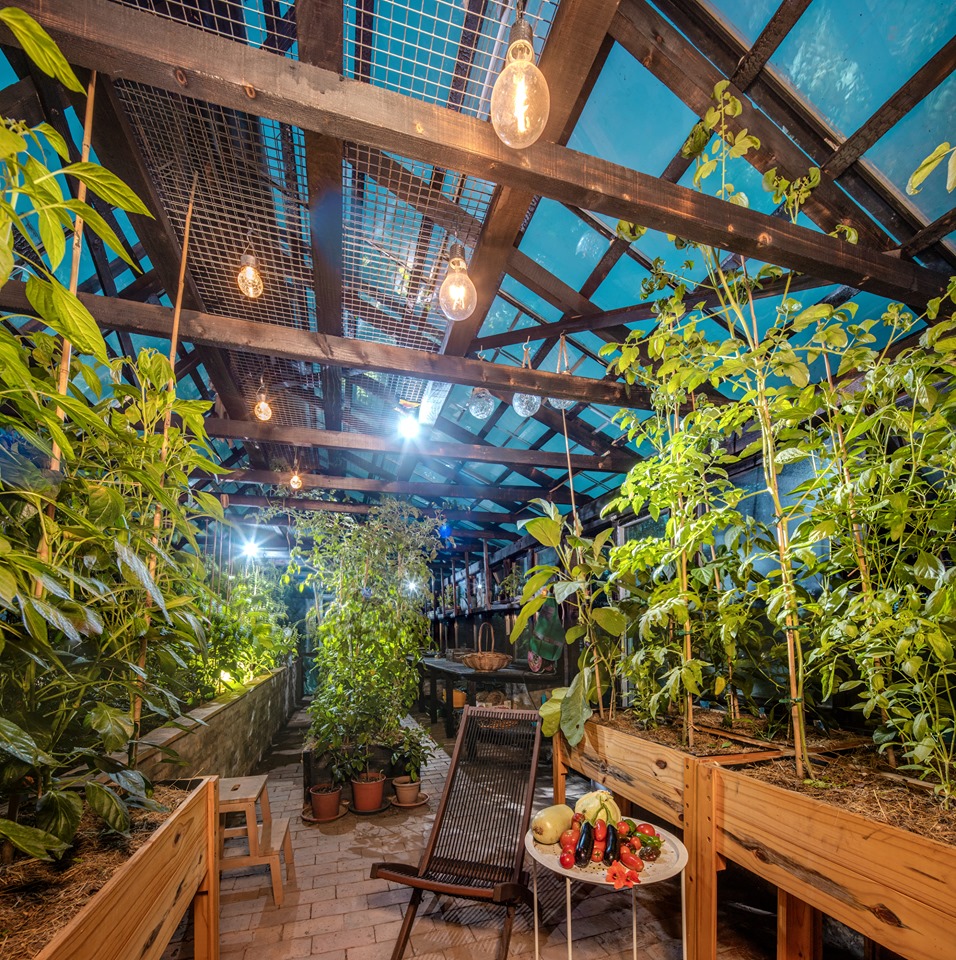
Mario is a good friend of mine and is diversifying from his very successful career as one of Croatia's premier photographers to open his own organic farm next to his home. It is fantastic! I stayed there a couple of weeks ago for the first time, slept like a log and woke to the clucking of hens.
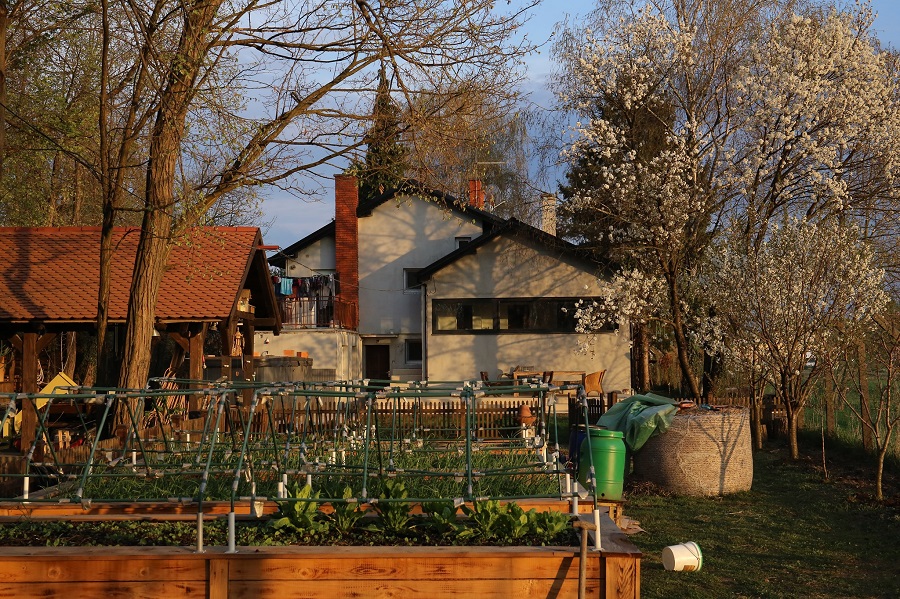
And all around the wooden house, organic produce leading to the family home. The kids loved it, especially the 15 cats (mostly tiny kittens) which were roaming freely with the hens.
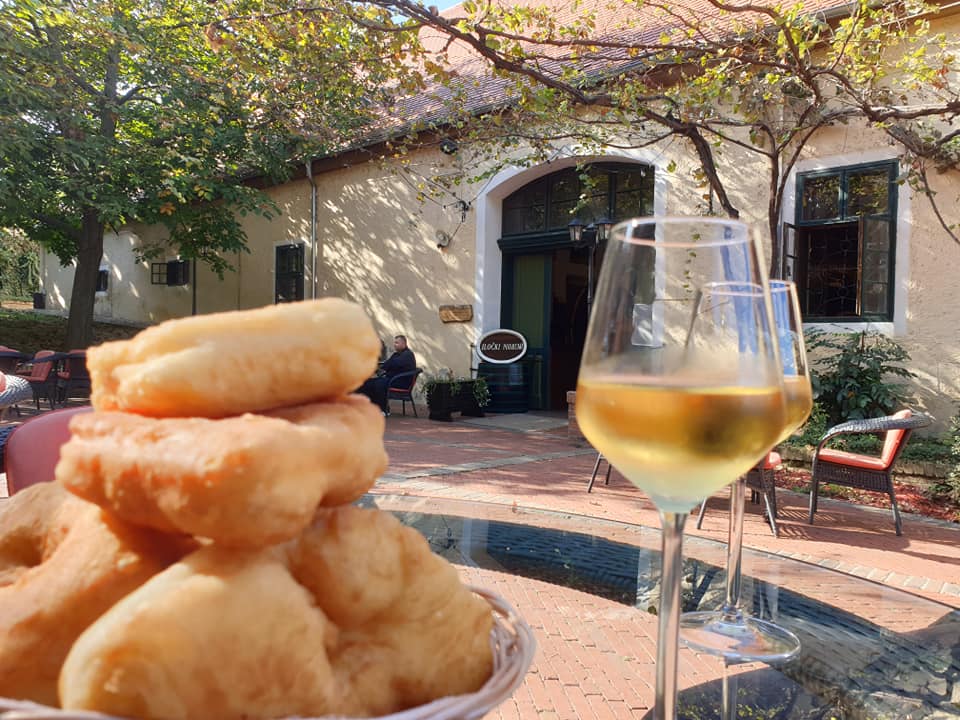
But we had also come to explore, and the first stop was a visit to the legendary cellars of Ilocki Podrum, Croatia's most decorated winery and purveyors of wine for the Royal weddings of William and Harry, as well as the Queen's coronation back in 1953 - learn more about that and the most expensive bottle of wine in Croatia.
But before the tour of the cellars, a little breakfast. A glass of Traminac with the most unusual-sounding breakfast dish I have ever come across. Literally translated - Torn Underpants. They tasted a lot better than they sounded.

The Ilok cellars are incredible, the stories even more so, and the wines even more so than that. There is a separate article coming on TCN, but in the meantime, just visit!
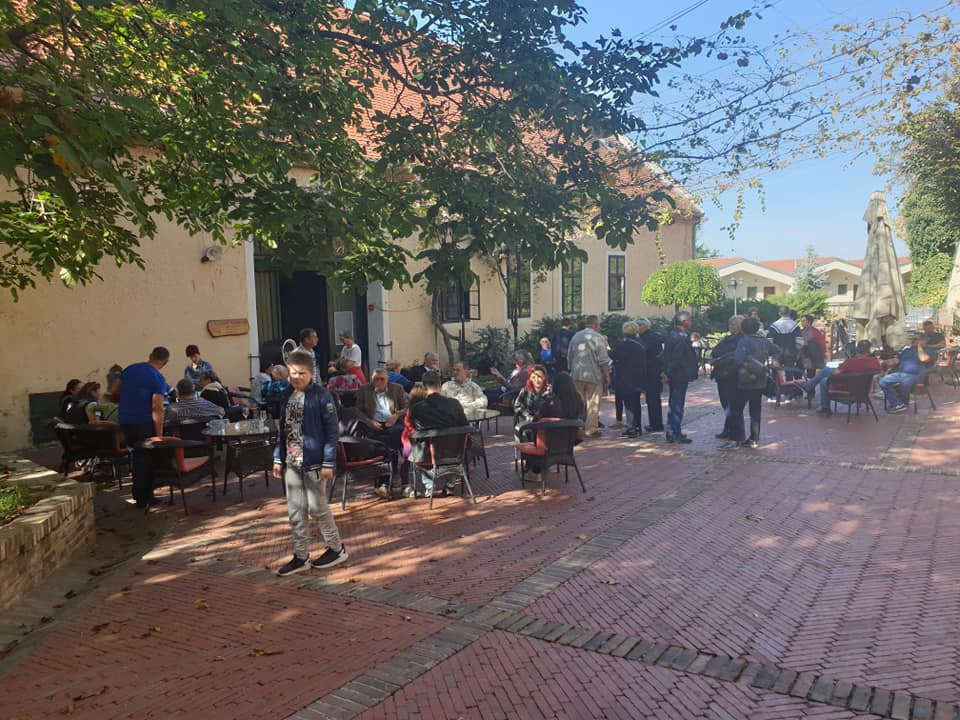
And plenty were visiting, even in mid-October. Just one of the day's tour groups from the United States. Despite its position as the easternmost point of Croatia, Ilocki Podrum receives some 70,000 tourists a year, 45,000 of them foreign.
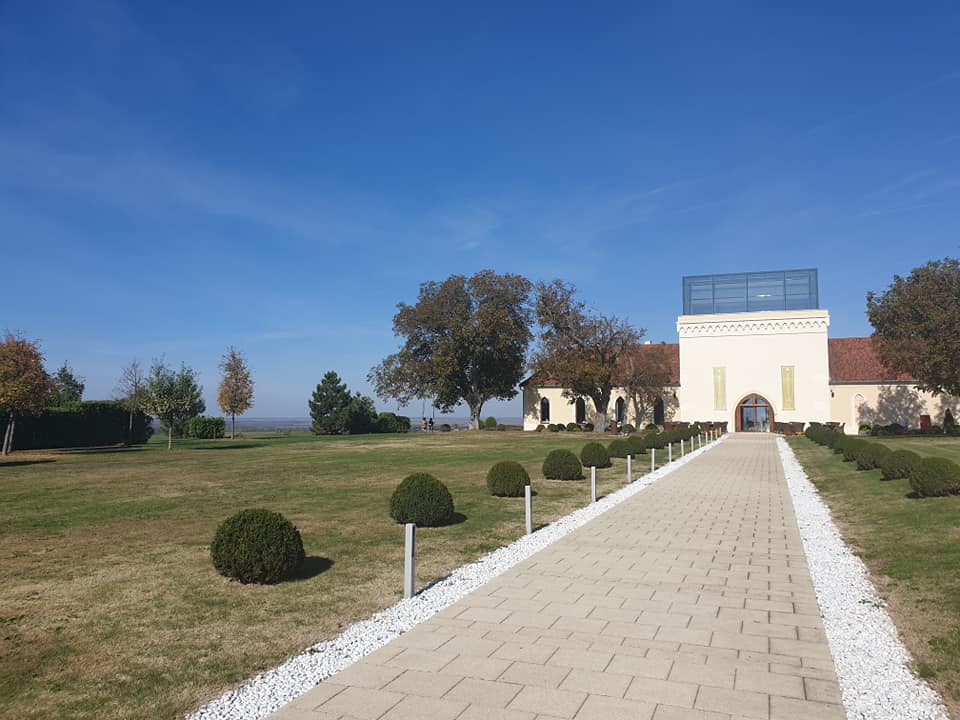
But while I was aware of the wines, I had no idea that tourism at Ilocki Podrumi was also booming in addition to the wine. The estate of Principovac is located in splendid isolation outside of town, a very popular wedding venue and complete with restaurant, quality accommodation, tennis courts and even some golf. A really great conference centre and place to escape the stresses of life.
And to party. The New Year's Eve festivities for 500 guests are quite something apparently. Take in the view in the video above.

There was just enough time to visit the compact old part of the town of Ilok as well. Really rather pretty and definitely a destination for a relaxing weekend in its own right.
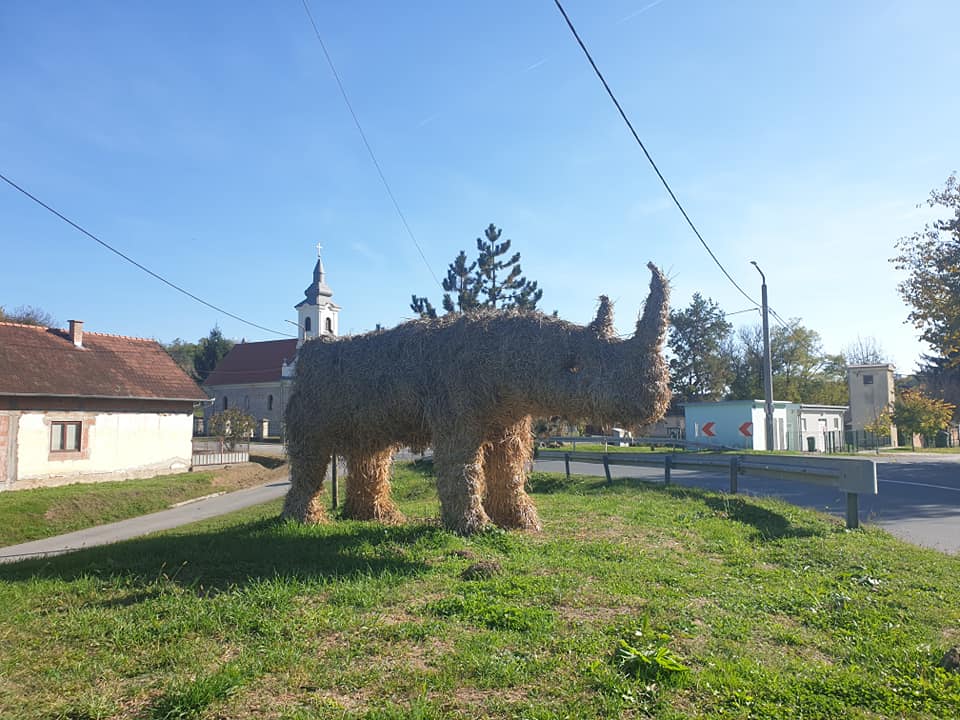
Slavonia is VERY flat and we loved the golden autumnal colours as we drove, as well as several very quirky things along the route. The famous Slavonian straw artist has been busy in the region...
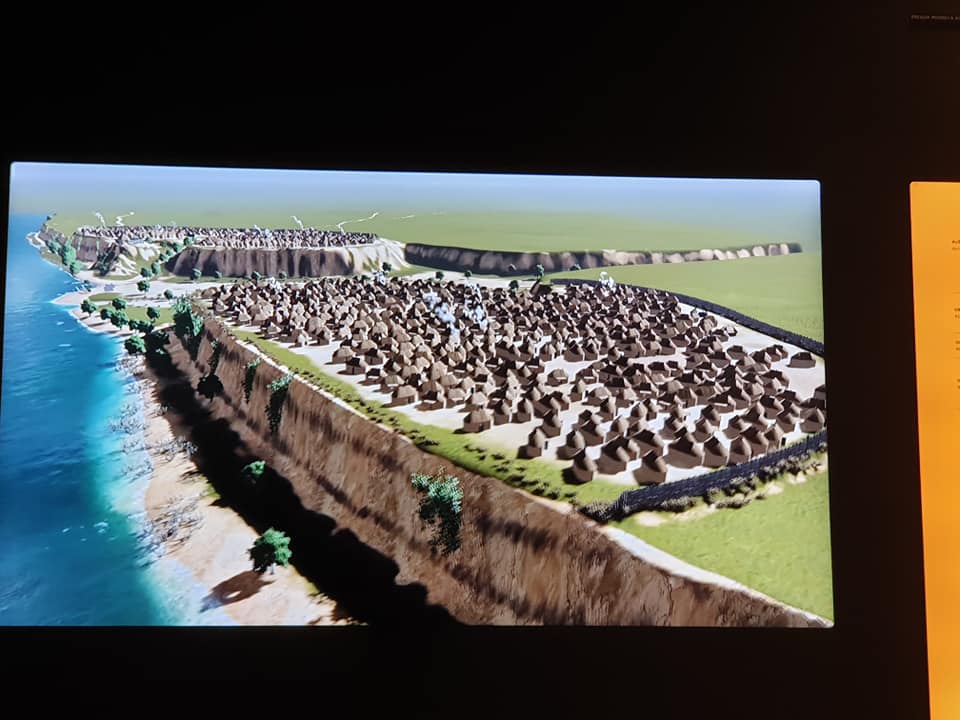
And then, finally, the chance to fill in one of the biggest gaps in my knowledge of Croatia - Vucedol.
And what a gap it turned out to be. I knew that there was some claim to ancient civilisation in eastern Croatia, but I had never researched it too much, and so the Vucedol Museum was quite a shock. For this modern-day suburb of Vukovar had once been as important as Paris today in terms of settlements in Europe.

And the discoveries of Vucedol place it very favourably with other world-famous cultures such as the pyramids in Egypt, Stonehenge etc. And yet very little is known internationally about Vucedol.

A very developed civilisation which gave the world the oldest calendar in Europe, the first metal casting of tools, and some rather funky fashion 5,000 years ago.
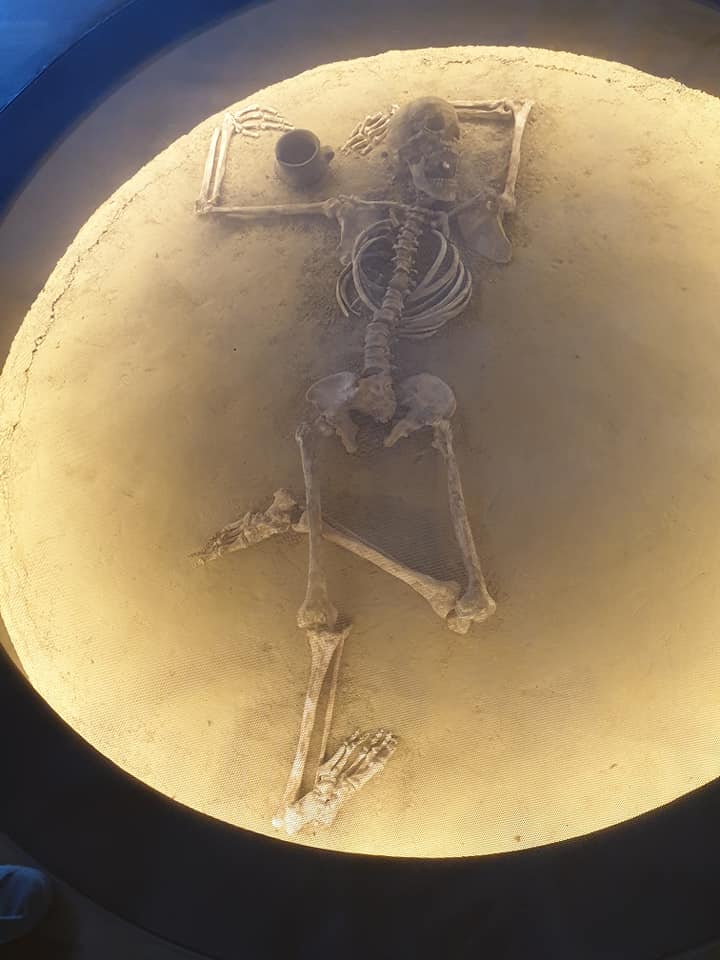
And rituals of human sacrifice.
More on Vucedol coming soon, but check out the museum, it is one of the very best in Croatia and a great family attraction. And the enticing thing is this - only 10% of the area has been excavated. Imagine what else is waiting to be found if the other 90% is ever excavated. Croatia could be home to one of the world's most important archaeological sites.
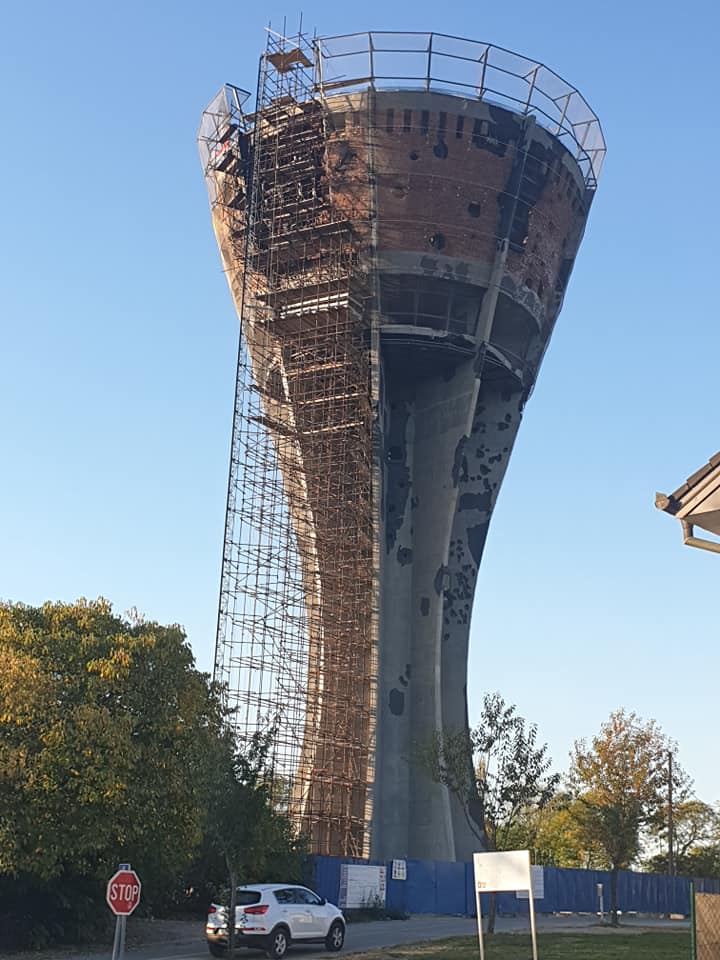
From the ancient past to the very recent past, as we visited probably the most famous building in eastern Croatia and symbol of the suffering of the heroic city of Vukovar, which is now under reconstruction.

I had planned on exploring Vukovar on a future visit, but as we were so close, we decided to drive through. The iconic water tower in the distance, the Danube separating Croatia from Serbia.

And cruise tourism, the type you rarely read about in the news, but growing slowly and bringing tourists to the east - cruises down the River Danube. Still going strong in mid-October.

And so to our next stop - to the oldest continuously inhabited town in all Europe, home to some of the more sensational Vucedol finds. Vinkovci, a fascinating town we covered in some detail recently.
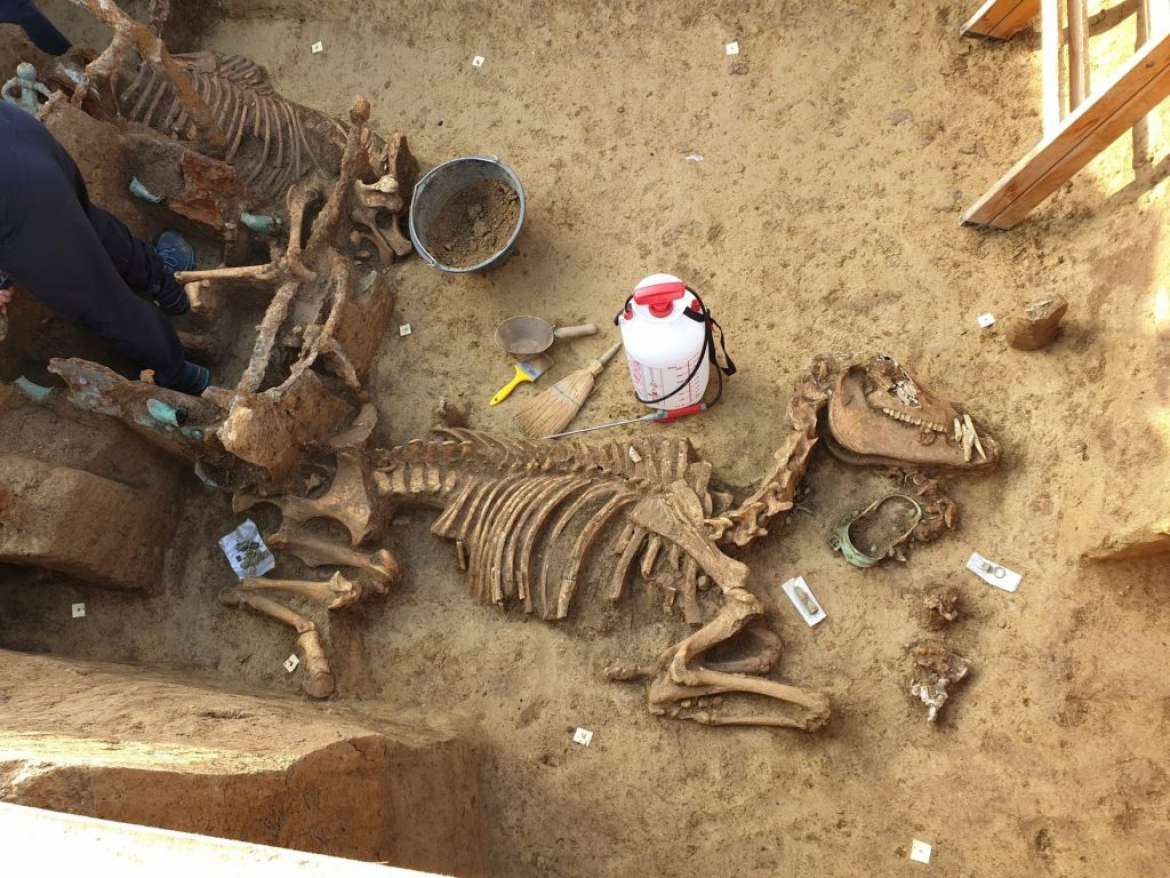
And since my visit a few weeks ago, yet one more sensational discovery - wonderfully preserved remains of a Roman chariot and horse. What other secrets await to be discovered - from Roman times, the Vucedol era, and others?
There was lots to ponder and discuss as we headed back to our organic paradise on Saturday night.

Sunday morning was spent with Barba Mario. As far away from the stress of modern life as one could hope to be.
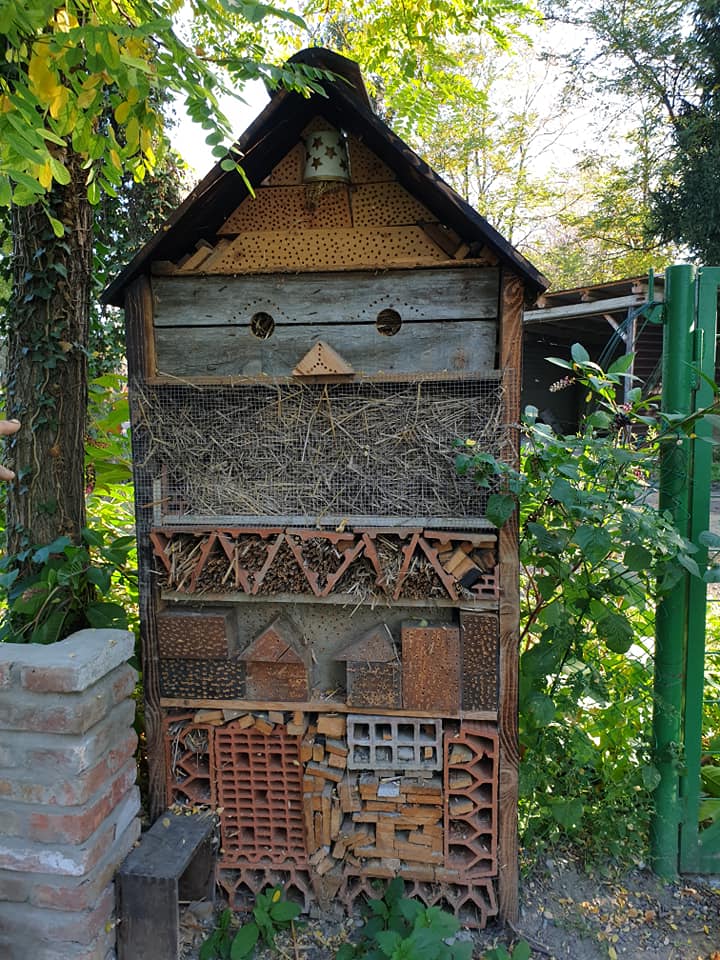
We really enjoyed our tour of his wonderful project, which you can learn more about on Facebook. and all the little details, such as this little bug hotel, which provides the right conditions for wild bees to thrive. They are essential as they work in much lower temperatures than ordinary bees, therefore pollinating where pollination would otherwise not happen.

And after a tour, a little breakfast - all locally sourced or home-grown.
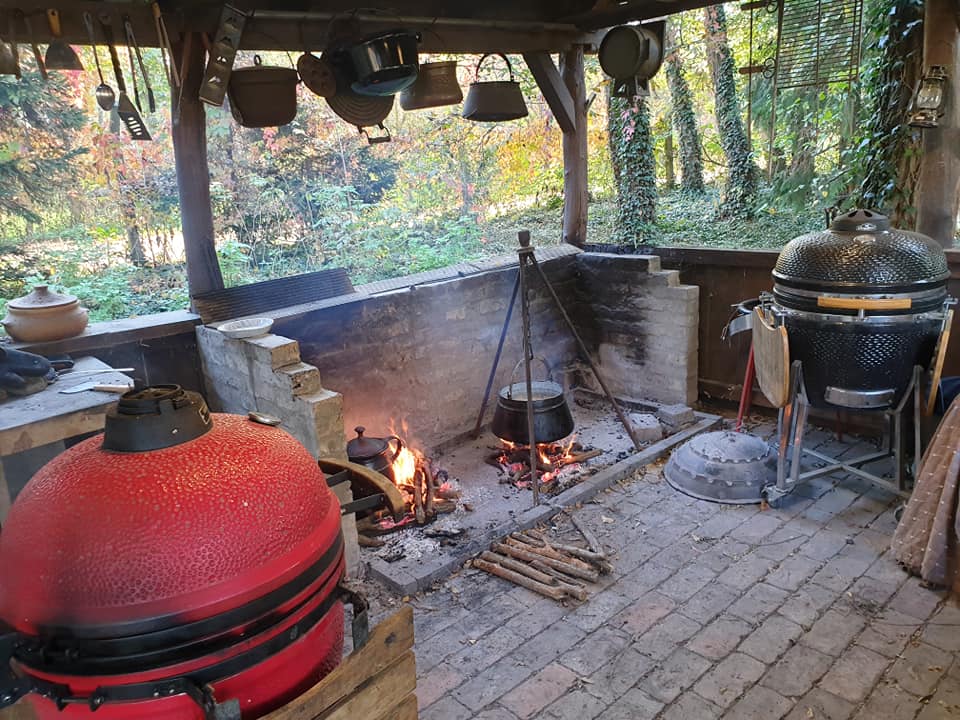
Slavonia is known for many things, including the best hospitality in all Croatia, and while we had planned to leave a little earlier, a tour of Mario's 'Meat Church' and an invitation to lunch proved too hard to resist.

And while Mario slow-cooked the meat, we drove the one kilometre necessary to one of the natural jewels of Croatian tourism, Kopacki Rit Nature Park.
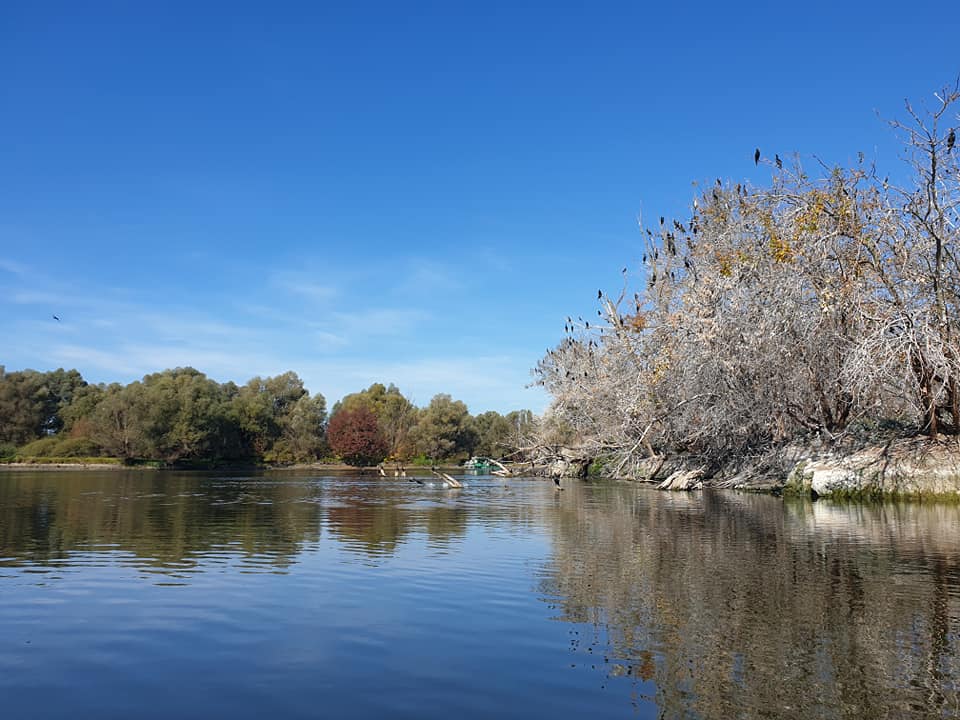
The weather was perfect, the nature more so - one of the most important wetlands in Europe, with over 300 species of birds.

And nicely constructed wooden walkways took you through the marshlands - beautifully done.
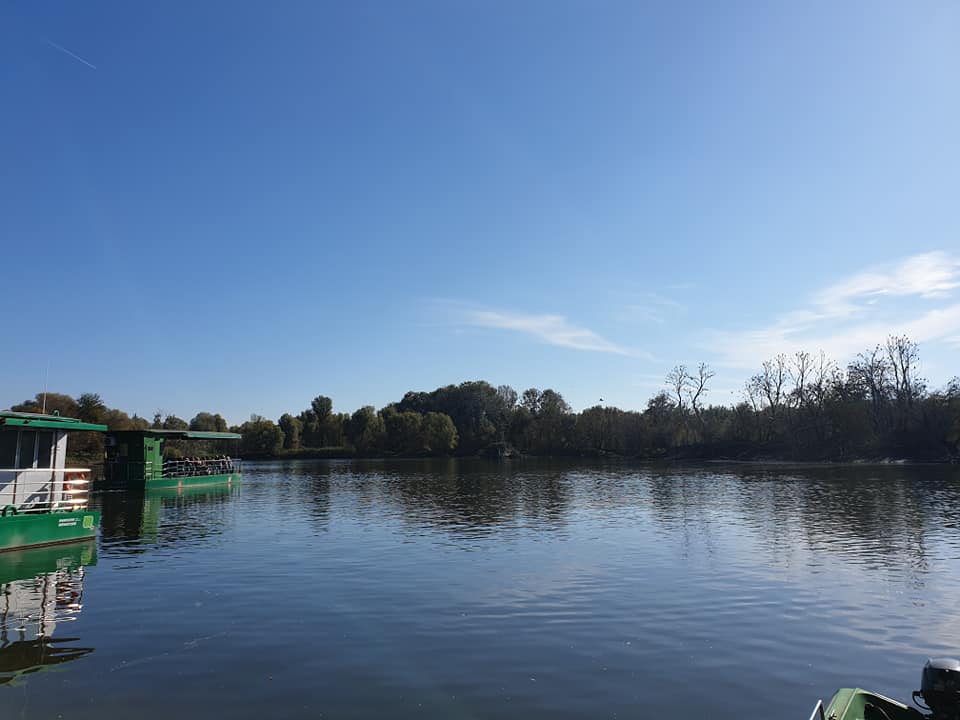
And we were not alone. Another boat full of tourists heads out into the Kopacki Rit waterways.
Meanwhile...
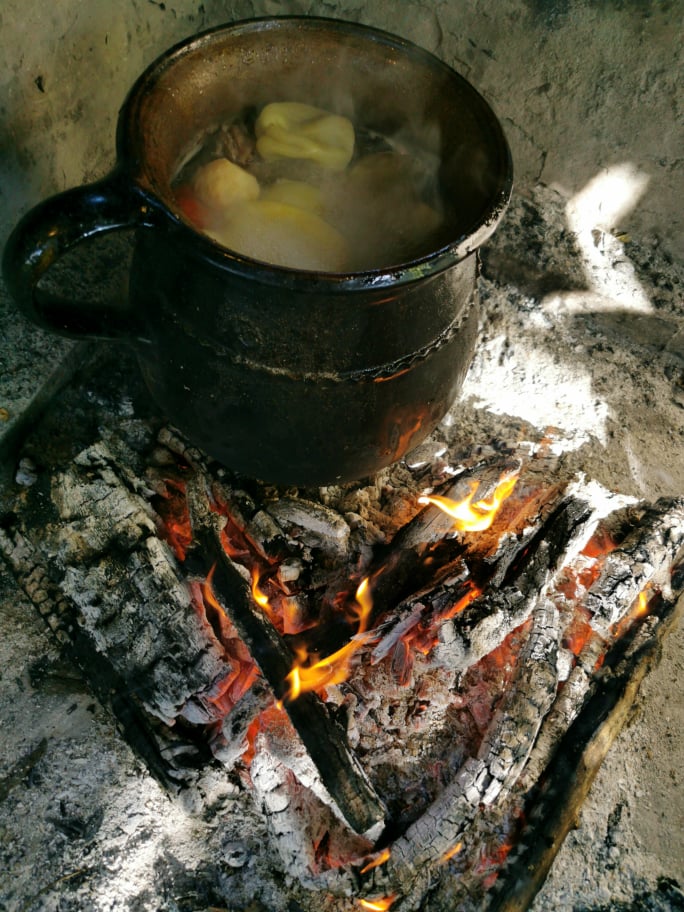
Romulic the photographer combines with Romulic the masterchef.

Cooking as It Once Was.
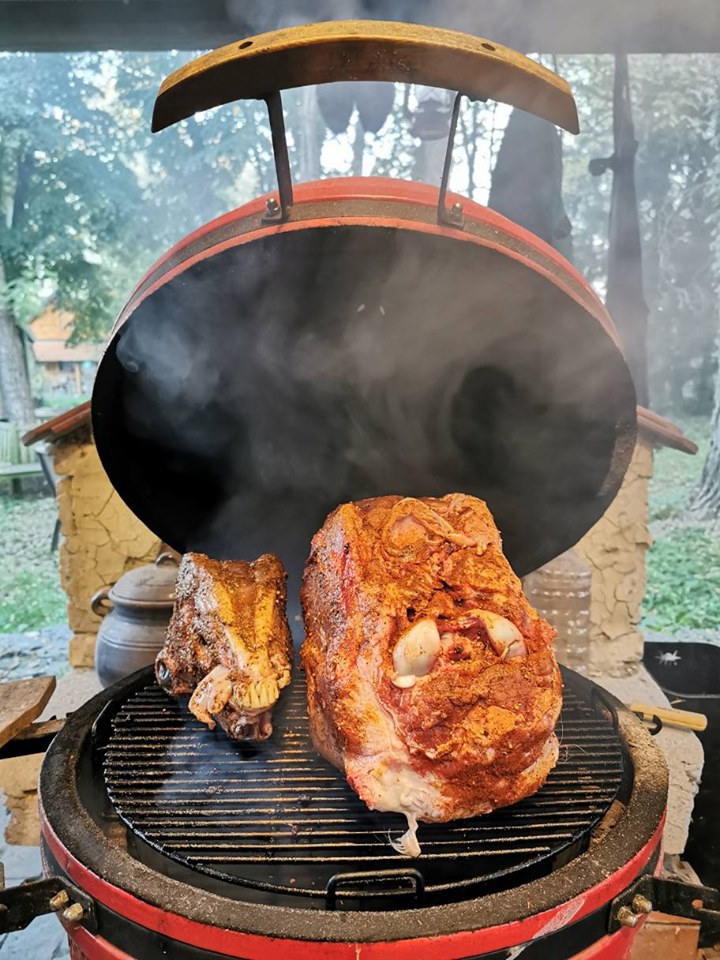
A hearty lunch, great company and fabulous Slavonian hospitality. It was with some regret that we packed our things and headed back west to our regular lives.
Budapest or Vienna for the weekend? Why not explore the jewels which are much closer to home instead?
Here are 10 things that I learned about eastern Croatia this month.
40 Years Ago, Oldest Indo-European Calendar Was Discovered in Croatia
ZAGREB, March 25, 2018 - Forty years ago, during an archaeological dig that accompanied the construction of a hotel in the eastern Croatian town of Vinkovci, a team of archaeologists led by Aleksandar Durman from Zagreb's Faculty of Humanities and Social Sciences unearthed a damaged pot with engraved astrological motifs, dated between 2800 and 2600 BC, and the lead archaeologist has later realised that it is the oldest European and Indo-European calendar, known as the Orion.
Vukovar-Vučedol-Ilok Cultural Destination Wins Prestigious Award
ZAGREB, March 23, 2018 - "Vukovar-Vučedol-Ilok" is one of 18 European destinations which have received the EDEN prize confirming the excellence of these destinations for cultural tourism, the Croatian National Tourism Board (HTZ) reported on Friday.
Eastern Croatia - Great Potential for Cultural Tourism
Not many particularly positive stories come out of Slavonia these days, but the potential is there, should someone tap into it...


